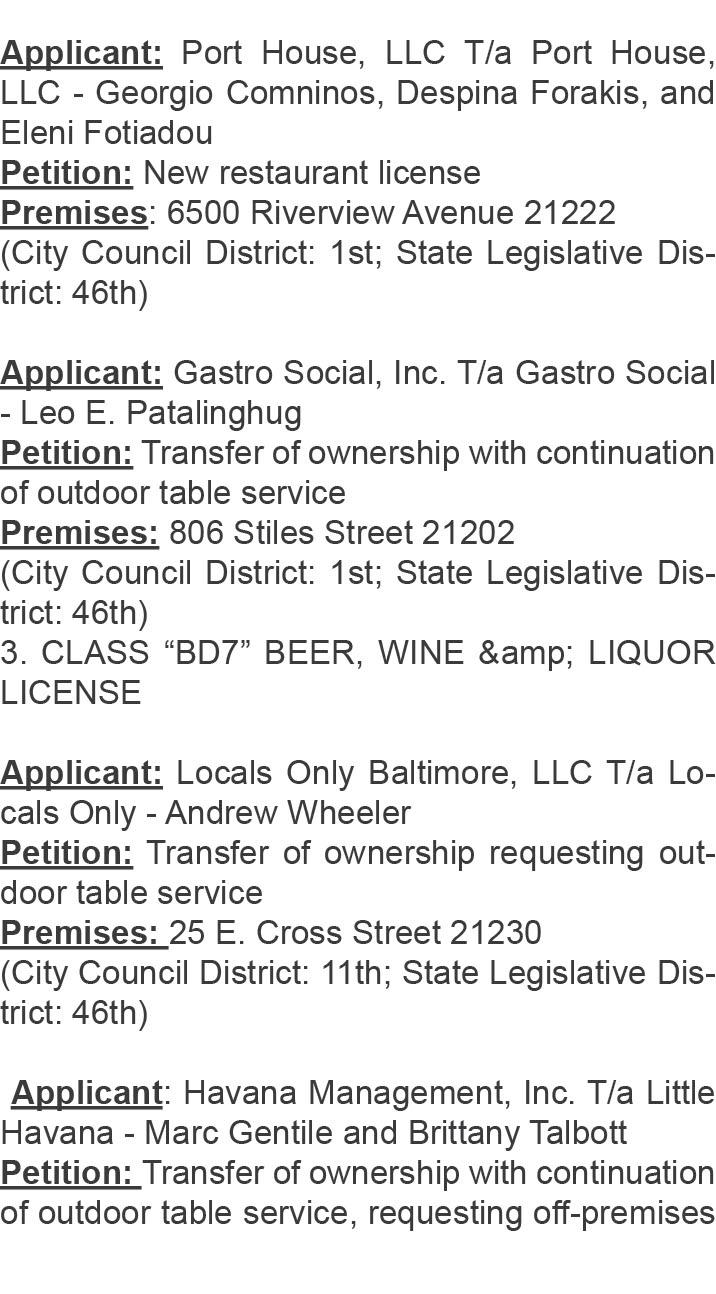






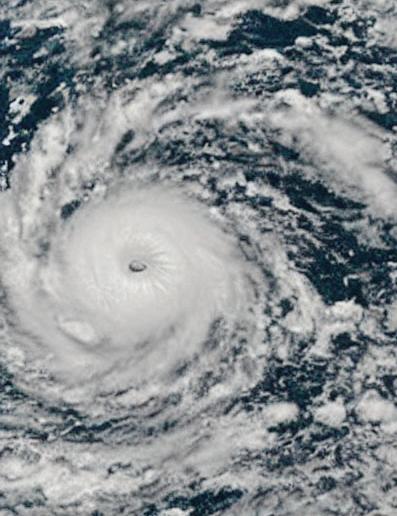

Significant and long-term changes in the average temperature, precipitation, and weather patterns on Earth— Climate Changes are largely driven by human activities, especially the burning of fossil fuels (coal, oil, and natural gas), deforestation and industrial processes.
This special edition looks at what’s happening around us and what we can do to lessen our carbon footprint for the benefit of future generations.

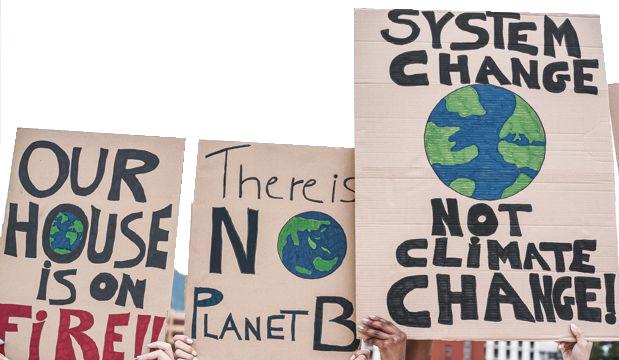



By Megan Sayles AFRO Business Writer msayles@afro.com
The effects of climate change can be likened to a Russian doll, revealing layers of intertwined consequences as you explore the phenomenon.
On the surface, the planet faces rising temperatures and extreme weather events, but these side effects come with ramifications of their own— some of which further beget climate change. This can be seen in positive feedback loops.
“A positive feedback loop is where one process accelerates or exacerbates another. For instance, with climate warming in high-latitude ecosystems there
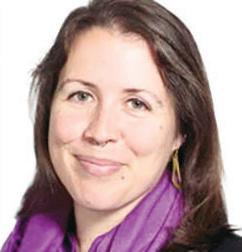
is increased likelihood, frequency and intensity of wildfires,” said Carly Phillips, research scientist in the Science Hub for Climate Litigation for the Union of Concerned Scientists. “As a result of their burning, greenhouse gasses are released, exacerbating global warming, which drives the wildfires in the first place.”
According to the National Interagency Fire Center (NIFC), the U.S. experienced more than 56,500 wildfires in 2023, burning 3.6 million acres of land. Canada also notably had its worst wildfire season yet with smoke reaching a number of Northeastern and Midwestern states in the U.S.
The AFRO recently connected with Phillips to dive deeper into the implications of the burning.
What are some of the unforeseen impacts of wildfires?
While wildfires are present in folks’ minds, I think the subsequent impacts are not necessarily as well appreciated or understood. In high latitude areas, there is a huge amount of carbon stored particularly below the ground in organic matter and soil. It’s also in permafrost, which is lower down in the soil profile. In these ecosystems, wildfires are burning increasingly larger areas at higher severity as the climate warms. When they burn, a lot of greenhouse gasses are released. There are air quality impacts that are really serious and widespread, but on top of that, the smoke and gasses that are released are a huge contribution to climate change, like carbon dioxide and methane.
There have also been several studies
published over the past few years that point to increases in lightning strikes in Arctic ecosystems. We know that in Alaska, lightning has been a huge driver of these major fire seasons they’ve seen over the last 10 years or so. That can have major implications for wildfires and thawing permafrost which can intensify climate warming.
How are people affected by wildfires even if they do not live in the immediate vicinity of the burning?
Smoke is a big one. Families may have to keep their kids indoors for multiple days at a time because it isn’t safe for them to be outside. There are also consequences that result from accelerating climate change even though they may feel abstract.
As emissions from wildfires are exacerbating global warming, people are feeling rising temperatures, which lead to the heat waves that we’re all experiencing this summer. There’s a cascading effect from the exacerbation of climate change that can’t be understated.
How does the fossil fuel industry contribute to the risk of wildfires and other climate change impacts?
The evidence shows that the burning of fossil fuels and deforestation are indubitably the primary drivers of climate change and the increase of greenhouse gasses we see in the atmosphere. It’s not just the fossil fuels themselves but the fossil fuel industry that drives climate change through
Sponsored Content
historical, ongoing deceptive practices. The industry has initiated campaigns to delay climate action and sow doubt about the veracity of climate science despite the incredible evidence that’s emerged over the past 20 years or so.
There have been advertisements that are disguised as editorial, which attack the science behind climate change. In some cases, they even attack the scientists themselves and their credibility.
We also know that internal research at some of these companies pointed to the risks of climate change really early on. However, instead of amplifying that information and warning about the dangers their products would cause, there was a concerted campaign to deceive the general public about what those risks were.
As wildfires intensify, what outcomes might we see in communities?
Wildfire smoke has been linked to things like increasing rates of asthma and lower birth weight. In California, we’re seeing insurers pull out of the market, and I think that’s related to wildfires escalating there.
We may also be faced with some hard choices about where we rebuild. There are people in communities who are very rooted in their sense of place, so what does it mean to lose that? I think that’s something the world is grappling with. How are folks navigating through losses and damages caused by wildfires and how are they being compensated not just in the U.S. but globally?
Sponsored by JPMorganChase
Anyone can be a victim of scams. They happen when scammers go after individuals of all ages, using tactics like phone calls, emails and messages to reel in unsuspecting victims to get to their money and personal information.
Older adults are often key targets and it is important to stay alert to common scams and financial abuse signs that can help protect older loved ones from becoming a victim.
Know the signs of a scam Scammers have grown very convincing. They often can impersonate companies or organizations and make you believe the urgency or need behind their attempts. If you encounter the following signs, you’re likely dealing with a scammer.
1. Urgent demands to take action, send money and personal information requests. An imposter may demand quick action, claim that you will lose money, and push for access to your personal account information, passwords or confirmation codes. Remember: neither banks nor the government will threaten you or demand money to protect your accounts. If you receive a call from your bank that you are unsure about, hang up and call the number on the back of your credit or debit card.
2. New relationships that take an interest in their money Financial abuse often happens from persons known to the victim, like a caretaker or a new acquaintance. Be wary of any new friends approaching you with investment “opportunities” or who take an interest in your financial information.
3. Unexpected contact from “loved ones.” Scammers can use artificial intelligence (AI) to replicate familiar voices, posing as friends or family. They’ll call you on the phone sounding like a loved one in danger and demanding that you send money. Hang up and contact your loved one directly to confirm it’s really them.
4. Unusual financial activity. Scammers could

be accessing your account if you see withdrawals or changes to your accounts, such as new authorized users or missed bill payments. Also, be sure to keep your checkbook safe and keep an eye on check activity. Automate all the payments you can and discuss who are trusted contacts to support money decisions if you ever need help.
5. Changes in ownership and responsibility. If you notice changes to wills, power of attorneys or any other financial plans, it could be a sign of financial abuse.
Take action to avoid scams You and your loved ones don’t have to be victims. These steps can help reduce the chance of falling for a scam:
• Ignore and block calls and messages from numbers you don’t recognize and don’t trust caller ID alone. When in doubt, hang up and contact the
company, bank or loved one directly to ask if there is a problem.
• Throw away unsolicited mail and be careful with suspicious emails or messages on social media. Don’t answer questions about personal finances.
• Keep your personal information, account details and passwords safe so you don’t give scammers access to your money and identity.
• Be cautious when using checks. Digital payment methods or your bank’s online bill payment feature can help you get money to your intended recipient while eliminating paper checks that can be stolen and altered.
• Enable online alerts to be aware of large purchases. You can act quickly if you see fraudulent charges.
• Shred bank statements, receipts, unused checks and credit cards before throwing them away.
If you’re an older adult, have conversations with trusted family members about how they can support your money needs as you age, which can help protect you from being exposed to fraud and financial exploitation. For those with older loved ones, start the conversation now and use digital tools to help alert you to possible scams.
Remember that financial scams can happen to anyone. If you feel you’ve been scammed, contact your bank to verify recent transactions to ensure there is no unusual activity on your account. Don’t feel embarrassed if you become a victim, share your experience with friends and family and ask for help.
You can learn more about ways to detect financial abuse and to protect loved ones at chase.com/ financialabuse
+++ For informational/educational purposes only: Views and strategies described may not be appropriate for everyone and are not intended as specific advice/ recommendation for any individual. Information has been obtained from sources believed to be reliable, but JPMorgan Chase & Co. or its affiliates and/or subsidiaries do not warrant its completeness or accuracy.

Dear Administrator Regan:
I write this letter in support of the September 26, 2023, Petition for Rulemaking submitted by South Baltimore Community Land Trust, Public Justice, Appalachian Mountain Advocates, and several other petitioners (“the Petitioners”) to Establish a Nationwide National Pollutant Discharge Elimination System Permit for Uncovered Rail Cars Transporting Coal, Pursuant to 33 U.S.C. § 1342(a).
As you know, millions of tons of coal are transported by rail in the United States every year. Due to wind erosion, coal rail cars act as point source discharges of pollution, depositing harmful coal dust into
the many streams, rivers, other waterways, and communities within proximity of train tracks. These coal and coal dust discharges pollute our nation’s waterways, leading to disastrous effects on aquatic ecosystems across the country. More specifically, fine coal particulates (i) inhibit the ability of aquatic plant life to photosynthesize and grow and (ii) harm gill-breathing marine life. This kind of pollution occurs from the west coast to the east coast, creating adverse health outcomes for families close to the point source discharge of pollution.
My constituents who live next to and around the Curtis Bay terminal, which is the second largest coal export

Your History • Your Community • Your News
The Afro-American Newspapers
Baltimore Office • Corporate Headquarters
233 E. Redwood Street 6th Floor, Suite 600G Baltimore, Maryland 21202
410-554-8200 • Fax: 410-554-8213 afro.com
Founded by John Henry Murphy Sr., August 13, 1892
Chairman of the Board/Publisher - Frances Murphy Draper
(Publisher Emeritus - John J. Oliver Jr.)
President - Benjamin Murphy Phillips IV
VP of Marketing and Technology - Kevin E. Peck
Director Digital Solutions - Dana Peck
Receptionist - Wanda Pearson - 410-554-8200, ext. 246
Director of Operations
Andrè Draper - 410-554-8200
Director of Finance
Bonnie Deanes - 410-554-8242
Executive Director/Director of Advertising
Lenora Howze - 410-554-8271 - lhowze@afro.com
Director of Community & Public Relations
Diane W. Hocker - 410-554-8243
Editorial
Managing Editor - Alexis Taylor - 410-554-8257
Special Projects Editor - Dorothy Boulware - 410-554-8231
Editorial Assistant - Ama Brown-Parson
Archivist - Savannah Wood- 410-554-8277
Baltimore Circulation/Distribution Manager Andrè Draper - 410-554-8200
Production Department - 410-554-8200
Washington Office 1140 3rd Street, N.E., 2nd Floor Washington, D.C. 20002-6723
202-332-0080 • Fax: 410-554-8213
(Washington Publisher Emerita - Frances L. Murphy II)
Director of Operations - Andrè Draper - 410-554-8200
Customer Service, Home Delivery and Subscriptions: 410-554-8200

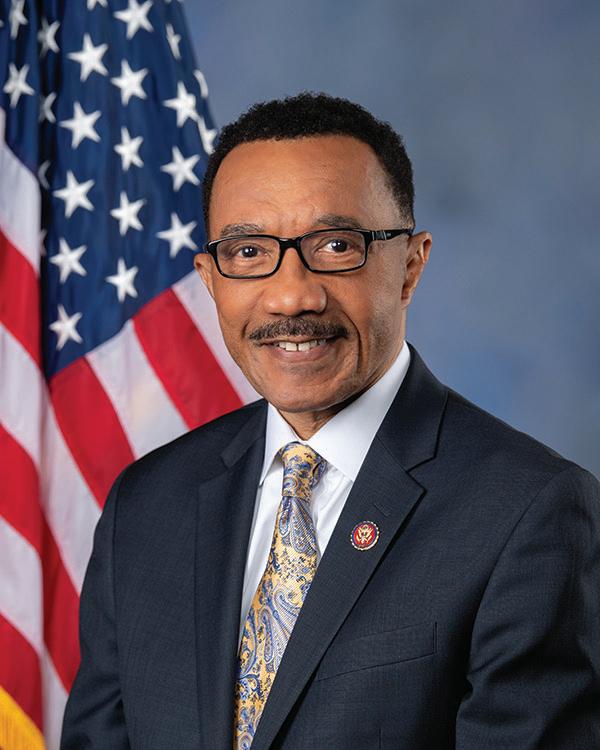
terminal in the nation, struggle to breathe clean air. The working class, majority Black and brown Curtis Bay neighborhood suffers from high levels of coal dust pollution blown from uncovered railcars. A study led by the Maryland Department of Environment and the South Baltimore Community Land Trust confirmed the existence of Particulate Matter 2.5 (PM2.5) and Particulate Matter 10 (PM10) pollution from coal dust, heavy diesel traffic, two nearby trash incinerators, and other industrial sites. Furthermore, scientific studies have linked PM2.5 and PM10 pollution to aggravated asthma, higher mortality rates for people with heart or lung disease, and other harmful effects. We can no longer idly sit by and let this grave case of environmental injustice continue unabated.
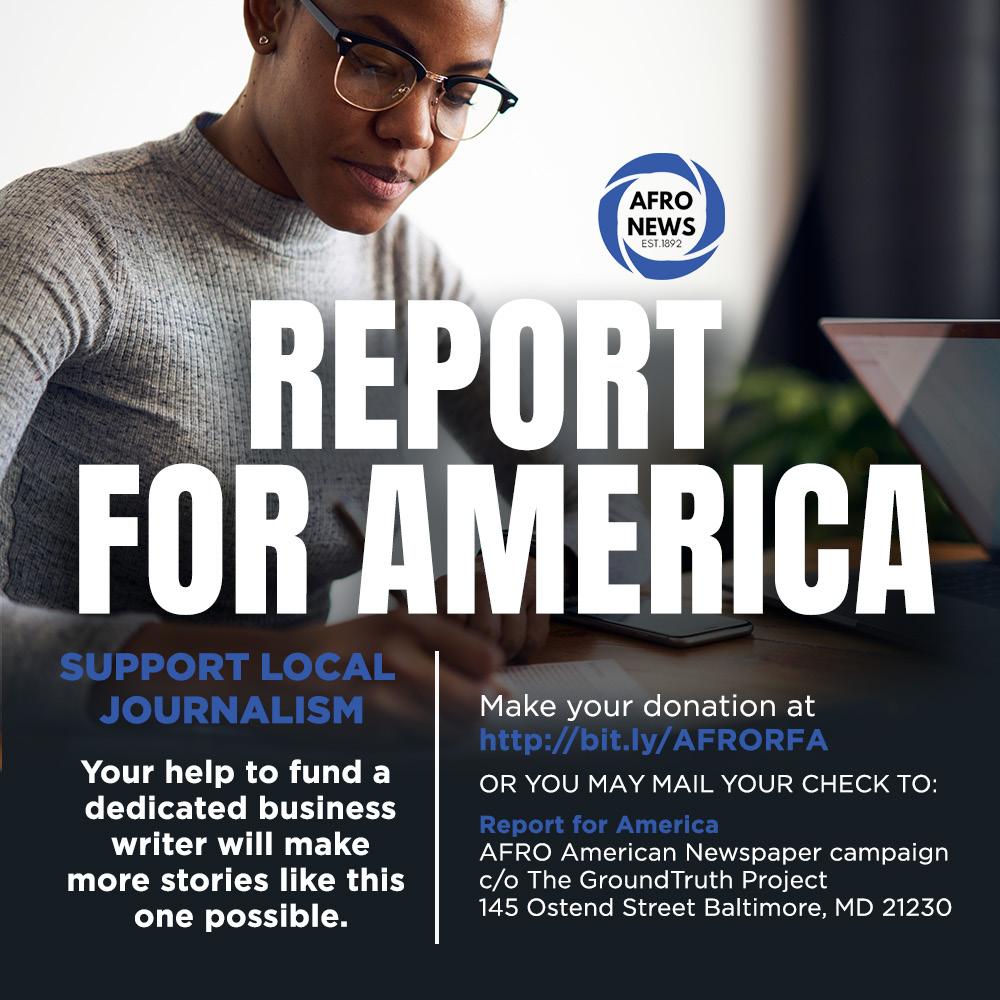
I applaud the monumental work your Agency has done to tackle pollution emitted by the fossil fuel industry. In your fight for environmental justice, I respectfully urge the Environmental Protection Agency, under your leadership, to enter into a rulemaking process consistent with the Petitioners’ request as soon as possible. We can and must use the authority, derived from the Clean Water Act, to protect our nation’s health and environment. I look forward to your help on this matter.
Sincerely, Congressmamn Kweisi Mfume

By Ben Jealous
“Isn’t it sad that money controls everything?”
That is what Kim Junker says, as she laments the iron grip wealthy pipeline interests seem to have over some of Iowa’s most powerful lawmakers. What she is referring to is a years-long fight against a massive carbon dioxide (CO2) pipeline project planned to run through the state.
Junker and her husband own farmland in both Grundy and Butler Counties where they grow corn and soybeans. She describes a “David vs. Goliath” fight. The irony is that in this case, David – at least in terms of the number of people on that side of the fight – is bigger.
The Iowans fighting the pipelines, and the use of eminent domain to seize people’s land for the projects, are a wideranging coalition of farmers and landowners, environmentalists, county supervisors and attorneys and others. It is a coalition that crosses all party lines. Junker herself identifies as a Republican-raised conservative who is also a conservationist.
The bill that was in front of legislators this year was overwhelmingly popular (as is opposition to the pipeline project). Written to maximize its chance of passage, it would have protected landowners’ due process rights by allowing them to challenge eminent domain requests in court earlier in the permitting process. Hardly radical stuff. By comparison
are a bad deal (for everyone who is not getting rich from them)
in neighboring Illinois, state lawmakers just passed a moratorium on all CO2 pipeline projects for two years or until the federal government issues new safety rules.
The bill in Iowa passed the Republican-majority Iowa House of Representatives in March on a whopping 86-7 vote, with massive bipartisan support. That bill was a watered down version of the bill that passed the Iowa House last year by a vote of 73-20. But this year, just like last year, the bill was killed in the state Senate before it could receive a floor vote.
Organizers in Iowa think the bill would have had enough support in the Senate to pass if it got a floor vote. Yet a handful of Senate leaders continue to prevent that and, in doing so, are conveniently preventing it from getting to the governor’s desk.
You see, Summit Carbon Solutions, the company behind the current pipeline plans, is owned by one of the state’s largest GOP donors and one of Iowa Governor Kim Reynolds’ biggest benefactors: Bruce Rastetter.
In 2023, as Kim Junker spoke at a rally on the steps of the state capitol in support of that year’s version of the eminent domain bill, a member of the crowd shouted out that if the bill passed in the Senate, “those people won’t get any money from Bruce!” The knowing laughter from the crowd at that sad and frustrating reality showed that Rastetter’s influence is hardly a well-kept secret among Iowans.

Courtesy Photo
Ben Jealous is the executive director of the Sierra Club and a professor of practice at the University of Pennsylvania.
The CO2 pipelines in question are part of a Carbon Capture and Storage (CCS) project, to help capture carbon emissions from the many ethanol plants across the states and pipe them out of state for deep underground storage. There are many reasons why CCS pipelines are not a good solution for curbing carbon emissions. Not the least of which is that the pipelines themselves are dangerous.
The pressure required to liquify CO2 for pipeline transport is immense – three times the pressure required for liquifying natural gas. That creates a dangerous possibility of pipeline ruptures. Any amount of water getting into the pipelines can react with the CO2 to weaken them. Intense storms, which are getting worse and more frequent due to climate change, can threaten pipeline
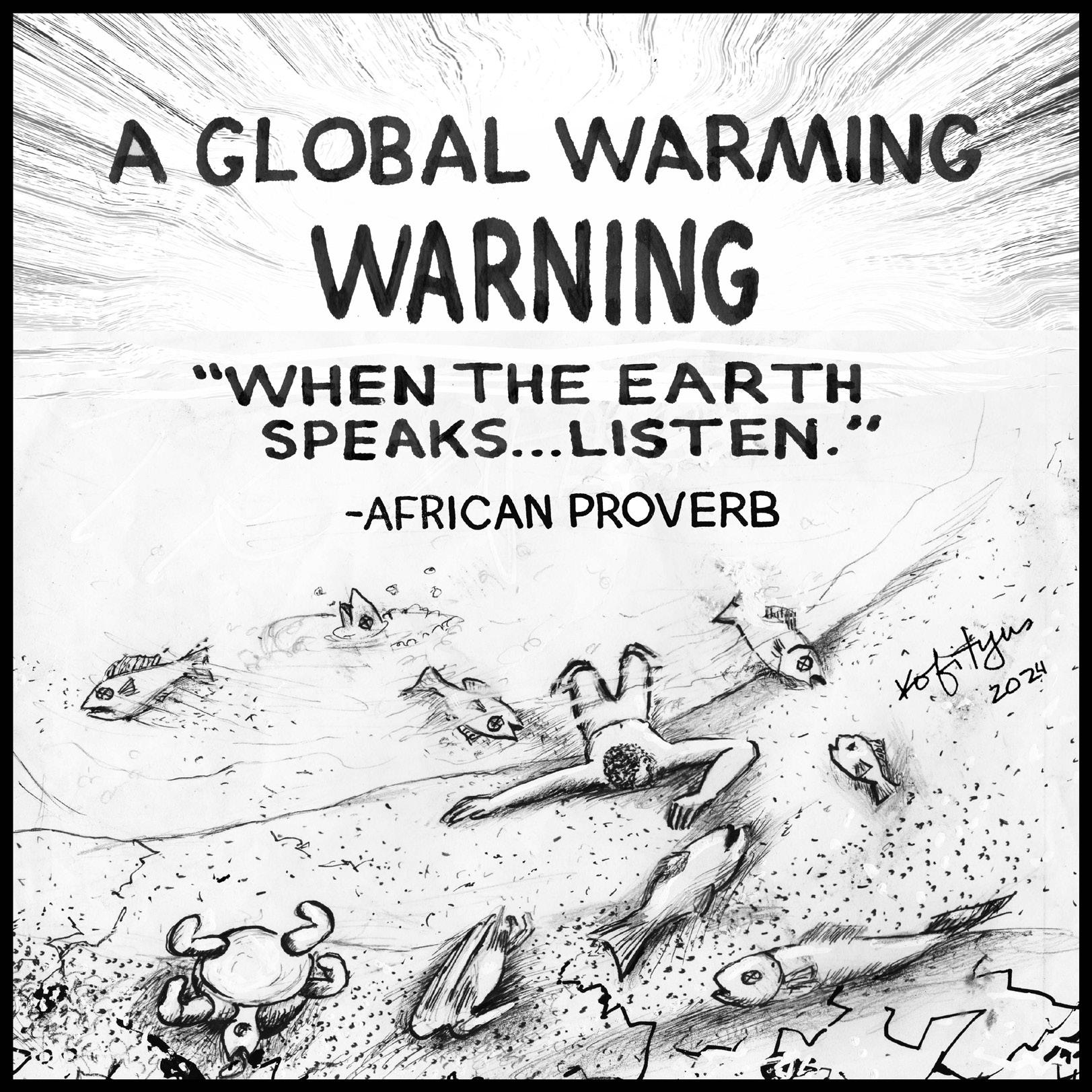
stability. A pipeline explosion can turn the pipeline itself into shrapnel. And then there is the toxic air pollution. In 2020, a plume of CO2 from a ruptured nearby pipeline settled over Satarcia, Mississippi. Residents felt the effects within minutes. More than 200 were evacuated and 45 people were hospitalized.
Experts say it was incredibly lucky no one died. Three years later, some residents reported still dealing with residual health issues like severe asthma attacks, headaches, muscle tremors, and trouble concentrating. The CO2 pipelines also harm the soil and reduce crop yields –a major concern for farmers. And for people like the Junkers, who have worked hard to own and maintain their land, the threat of losing their land is perhaps the worst dagger in the heart. This article was originally published by National News Releases.
See more on afro.com
By Wayne Campbell
Hurricane Beryl has gone but we are left to pick up the pieces. Those Caribbean islands which were impacted by Hurricane Beryl are now in a state of assessment and rebuilding. Jamaica, Grenada and St. Vincent are the countries in Caricom that have been impacted the most. Barbados was impacted to a lesser extent.
The hurricane which lashed the southeastern Caribbean with lifethreatening winds and flooding made history before it even made landfall. Beryl became the earliest hurricane to reach Category 5 strength on record in the Atlantic Basin. Beryl also became the earliest Atlantic hurricane on record with winds of at least 150 mph. Perhaps, the two most riveting lessons to be learned from the passage of Hurricane Beryl are that Caribbean governments must pay more attention to climate change and the rebuilding process must
include technologies associated with renewable energies. Climate change has a very tangible impact on Small Island Developing States (SIDS). This impact is located in the destruction of communications, energy and transport infrastructure, homes, health facilities and schools. The United Nations states that slow onset events such as sea level rise pose an existential threat to small island communities, requiring drastic measures such as relocation of populations, and the related challenges this poses. These challenges are compounded by limited institutional capacity, scarce financial resources and a high degree of vulnerability to systemic shocks. The UN argues that biodiversity is an important issue for the livelihood of many SIDS, as industries like tourism and fisheries can constitute over half of the Gross Domestic Product (GDP) of small island economies. However, the importance of these natural
resources extends beyond the economy; biodiversity holds aesthetic and spiritual value for many island communities. For centuries, these communities have drawn benefits from biodiversity in the form of food supply, clean water, reduced beach erosion, soil and sand formation and protection from storm surges. Additionally, strong biodiversity not only generates revenue through industries for SIDS, it also helps prevent the incurrence of additional costs that can result from climate change, soil erosion, pollution, floods, natural disasters and other destructive phenomena.
Climate change
Climate change is one of the greatest environmental challenges faced by societies today. It has significant implications on energy, food and water security as well as health and safety for countries and people around the world.
Climate change refers to longterm shifts in temperatures and weather patterns. Such shifts can be natural, due to changes in the sun’s activity or large volcanic eruptions. But since the 1800s, human activities have been the main driver of climate change, primarily due to the burning of fossil fuels like coal, oil and gas. Burning fossil fuels generates greenhouse gas emissions that act like a blanket wrapped around the Earth, trapping the sun’s heat and raising temperatures. The main greenhouse gasses that are causing climate change include carbon dioxide and methane. These come from using gasoline for driving a car or coal for heating a building, for example. Clearing land and cutting down forests can also release carbon dioxide. Agriculture, oil and gas operations are major sources of methane emissions. Energy, industry, transport, buildings, agriculture and land use are among the main sectors causing greenhouse gasses.
The consequences of climate change now include, among others, intense droughts, water scarcity, severe fires, rising sea levels, flooding, melting polar ice, catastrophic storms.
Renewable energy
Over the years technology has changed drastically. The manner in which we built 50 years ago is not the same way architects design and build homes in the 21st century. As SIDS we are blessed with an abundance of sun. Caribbean governments need to invest more resources as it relates to how they can harness more solar energy and include this in the design and building of homes. One of the most exciting technologies in recent times is that of solar windows.
Solar windows
Transparent solar panels can be described as one of the new technologies that are specifically
designed to provide windows with the ability to capture energy from sunlight and yet be transparent at the same time. The heart of the technology is found in the form of the transparent solar cells.
See more on afro.com

By Rev. Lennox Yearwood Jr.
In Louisiana’s “Cancer Alley,” where the air is thick with pollutants and asthma rates are alarmingly high, a troublesome irony is unfolding. This region is home to sprawling petrochemical plants and toxic fossil fuels that disproportionately affect the respiratory health of the area’s majority-Black residents. Here, inhalers — one of the key tools for managing diseases like asthma — play a dual role: alleviating symptoms of pollution while also contributing to environmental degradation. This paradox has underscored the urgent need for sustainable solutions that holistically address environmental justice, health and racial equity issues in frontline communities like Cancer Alley. Inhalers, often viewed as life-saving devices, have a profoundly negative impact
on the environment. The most popular of the two main varieties of inhaler, metereddose inhalers, release a gas that warms the earth hundreds of times faster than carbon dioxide.
A recent investigation by NPR revealed that the cumulative amount of climate-damaging gasses released from traditional inhalers is the equivalent of driving half a million gaspowered cars for a year. This means that each puff contributes significantly to climate disintegration. And as pollution damages more people’s lungs, the need for inhalers increases.
This 85-mile stretch of land wasn’t always referred to as Cancer Alley. Older residents recall a thriving community where many people lived off the nutrient-rich land. However, corporate greed and negligent politicians have irreparably damaged the soil, the land and the air, leading to some of the
highest cancer rates per year for residents.
Dozens of new cases each year are believed to be linked to severe air pollution. That pollution has also led to high rates of asthma in the area. Even more concerning is data showing the link between pollution, asthma and cancer is visible in neighborhoods with high poverty rates — but not in more affluent communities, proving again that poverty kills.
The implications of the inhaler paradox are staggering. Not only do frontline communities bear the brunt of pollution-related health burdens, but they also face the ironic reality of using medical interventions that perpetuate the cycle of environmental degradation. Addressing this issue requires collective advocacy and action between healthcare professionals, environmental advocates,
policymakers and community leaders.
We have long approached environmental and public health solutions with a bandaid instead of a cure. The unique problem posed by inhalers releasing toxic gasses that increase climate change is one example why short-term solutions are no longer an acceptable way to manage our climate’s deteriorating health. Frankly speaking, it’s too costly to keep operating under this model when it is costing lives, the health of our planet and our collective future.
Beyond encouraging the use of other inhalers and safe recycling, it is critical that government agencies do more to address greenhouse gas emissions so that we can proactively focus on prevention efforts instead of doing damage control.
While recent EPA rules on clean vehicles and emission reduction efforts are encouraging,
it is not enough to combat the damage we have already done to the planet.
That is why my organization, the Hip Hop Caucus, is working with communities on the frontlines of these issues, uplifting their stories through The Coolest Show. Together we’re pushing back against attempts to roll back the minimal regulations protecting these communities and advocating to shut down operations that disproportionately put Black and Brown lives at risk.
We’ve witnessed the effects of corporate greed and climate denial on our planet. It’s untenable to keep proposing short-term public health solutions without addressing the underlying causes of disease.
Reports have shown how creating climate friendly policies can save taxpayer dollars in the long run — and more importantly, save lives.
not too late to do right by the 20,000 residents of
But we must act before it’s too late.


By Willy Blackmore Word In Black
In 2015, Adrienne Boulware was sentenced to 15 years to life in California state prison in connection to the 2011 death of a man in Sacramento. But over the weekend, as temperatures hit 110 degrees in the Central Valley town of Chowchilla, where Boulware was imprisoned at the Central California Women’s Facility, prisoner advocates and her family say she died due to the heat nine years into her sentence.
A spokesperson for the state’s corrections department said that Boulware’s death was related to on-going health problems. But the conditions at Chowchilla, where 2,000 women are incarcerated, sound down-right horrific during summer heat waves — which are common in the sweltering Central Valley, but have been particularly hot these past two years.
There is no air conditioning in the cells, which are overcrowded like so many California

prisons are. Like Boulware, just over a quarter of all women prisoners in the state are Black, while just 5.7 percent of the overall California population is Black. Her daughter, Michela Nelson, said that Boulware regularly complained about how difficult the hot summer months were at Chowchilla.
“Something could have been done to prevent it.
And she was so close to coming home — it’s like a slap in the face,” Nelson told the Sacramento Bee.
“People in prison are not just a number.”
Corrections officials say that residential areas in California’s prisons are cooled, but mainly with evaporative coolers (which are common in the desert-like communities where many of the prisons are located) or fans, not
actual air conditioning. According to a recent study on extreme heat in prisons, California came in third behind Texas and Florida for the most days of dangerously high temperatures that prisoners are exposed to.
State law requires that certain preventive measures are taken when temperatures exceed 90 degrees outside, with more extensive interventions
put into place when the thermometer hits 90 or 95 degrees inside — including moving prisoners with health issues that make them vulnerable to high temperatures to air conditioned spaces and monitoring for signs of heat-related illnesses by the nurses on staff.
There are additional actions that California prisons “may” take during extreme-heat situations, according to the Department of Corrections website, including providing ice, increased access to air-conditioned areas, or moving yardaccess times to the evening to reduce exposure to high temperatures — but none of those means of providing relief are required.
So while those rules may exist on paper, prisoners at Chowchilla say they experience heat waves with little to no relief.
“Please help us, they’re not doing anything for us,”
Trancita Ponce, who is imprisoned at Chowchilla, said in a statement from the California Coalition for Women Prisoners. “There
is hot air blowing inside of our rooms, I have a huge migraine and I feel sick and other girls are throwing up.” Ponce said that temperatures in the facility can reach as high as 97 degrees.
Last year, California scrapped plans to enact heat protections for indoor workers in the state after it was suggested that it would cost the state billions of dollars to retrofit prison buildings (which would have been covered by the rules) with adequate cooling. In Texas, however, a lawsuit may eventually win the right to be at least somewhat cool for the state’s prisoners: the state is being sued by prisoners who live in cells without air conditioning, with lawyers arguing that being kept in such conditions amounts to cruel and unusual punishment. If the lawsuit is successful, it could establish a maximum indoor temperature of 85 degrees for state-run prisons.
This article was originally published by Word In Black.


Experts discuss how microplastics get into our systems and the effects
By Aria Brent AFRO Staff Writer abrent@afro.com
The ongoing discovery of microplastics is raising concerns for lots of people. There are questions about how these microscopic pieces of plastic affect the body, where they come from and how they get into our bloodstreams. Reports have noted that microplastics can affect your health and in some cases result in heart attack, stroke or death. And although this is true, there isn’t research or evidence to show how likely this is or if it’s enough of an issue to be addressed by agencies like the Food and Drug Administration (FDA) or the Center for Disease Control (CDC).
The AFRO spoke with a series of experts who explained how microplastics get into our bloodstreams and how dangerous they actually are.
“We did not know until recently that micro and nanoplastics could get into the bloodstream. A recent clinical study in the New England Journal of Medicine showed that micro and nanoplastics can get into the bloodstream and were found to be present in clumps that had accumulated in the carotid arteries of patients,’ said Loren Wold, Ph.D, a cardiovascular physiology

courtesy of Unsplash.com/ FlyD
Image
Microplastics
are continuing to alarm people about their health, however there is little evidence and research to support the idea of it being a threat or health concern.
professor at the Ohio State University Wexner Medical Center. “We now know that micro and nanoplastics can be consumed either through ingestion, through breathing them in or through your skin. They can actually get into your circulation and therefore affect anywhere within your body.”
The experienced healthcare professional noted how common materials like nylon and polyester are one way that microplastics get into the bloodstream. However literal ingestion from eating and drinking out of plastic containers is another way that microplastics find their way into our bodies. Paul Takhistov, Ph.D, an associate
professor of food engineering at the department of food science at Rutgers University detailed how this process works.
“The source of micro and nanoplastics is not just from plastic bottles. The polymers are an engineered material and are subject to aging.When they age they lose a little bit of elasticity and microcracks develop,” he explained.
“Starting from the farm food collected in plastic crates or boxes, then they are exposed to the machinery and only a few materials are allowed to be in contact with the food for this highly regulated industry. They do everything that’s possible to make it safe, but you cannot avoid
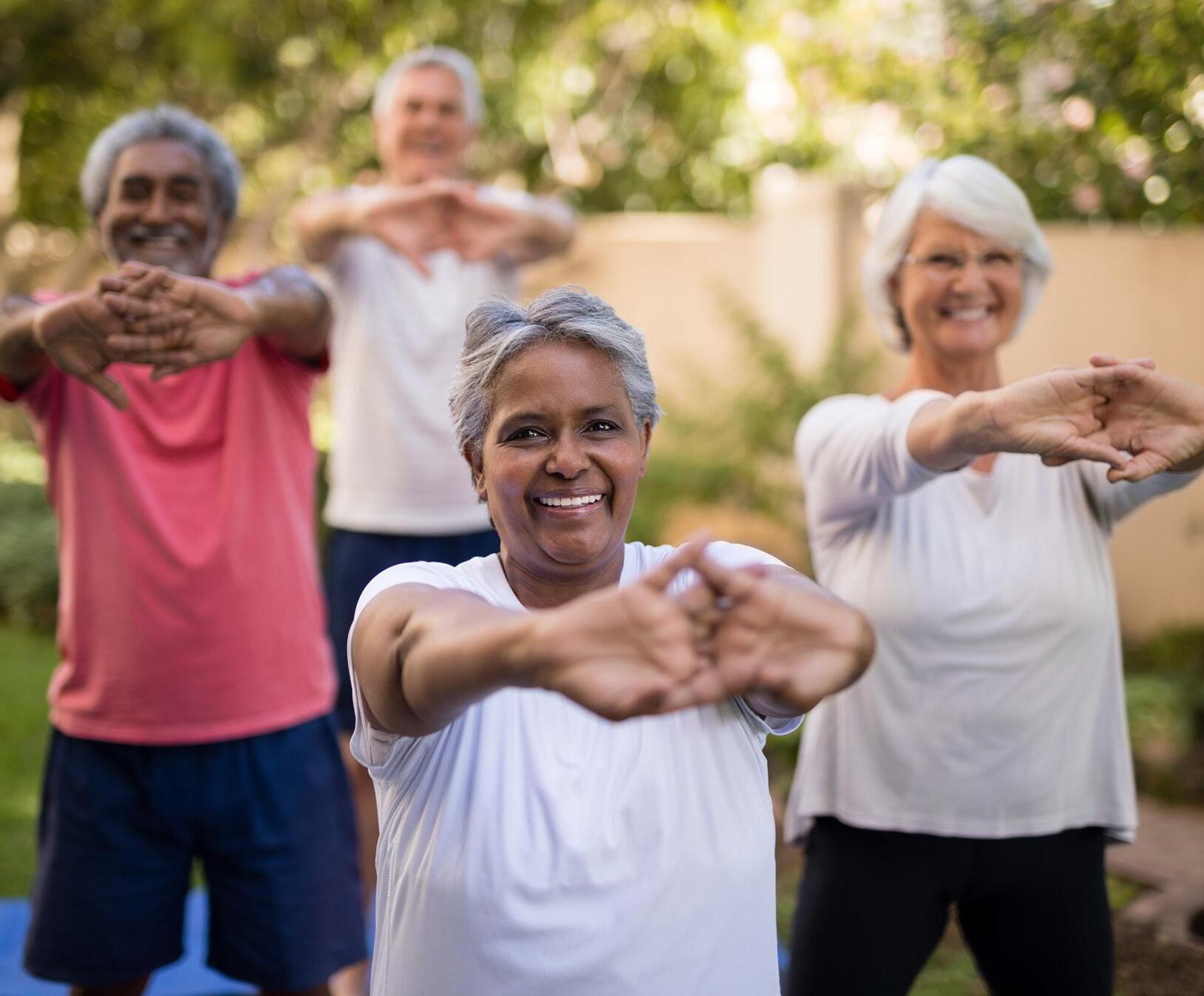
Now’s your time to enjoy it all. In our diverse and inviting Life Plan community, surround yourself with people you’ll like and social opportunities you’ll love. Settle into a home amongst nature, supported by a continuum of care for every age and ability. At Broadmead, you’ll be able to focus on a lifestyle you truly enjoy!
Receive your free Retirement Planning Kit to find out more. Call (443) 578-8008 or email information@broadmead.org
production and the final stage of the packaging. Recently it was found that even the safest polymeric materials can generate some micro particles.”
It was noted by both Wold and Takhistov that microplastics are also in the air, making direct consumption a lot easier.
Wold explained that there isn’t any research to back up the claim, but it’s safe to infer that areas dealing with higher rates of pollution are also more likely to be affected by microplastics.
and those studies must be done so that we can begin to understand the true effects of microplastics.”
Takhistov went on to explain how the miniature pieces of plastic affect agriculture. Noting that due to them being in the air options like urban gardening aren’t much of an alternative when trying to avoid them being in your produce.
“Urban gardening has become very popular especially among communities that have limited access to fresh produce but urban
“And although we don’t have that data with micro and nanoplastics we can infer that because they are really small particles in the air similar to air pollution they would have similar outcomes. Right now it’s simply correlative and those studies must be done so that we can begin to understand the true effects of microplastics.”
“The studies have not looked at various demographics and that’s something that absolutely must be done. We know that those who live in inner cities and near freeways have been tied to having a lower socioeconomic status and higher rates of exposure to air pollution,” Wold said. “And although we don’t have that data with micro and nanoplastics we can infer that because they are really small particles in the air similar to air pollution they would have similar outcomes. Right now it’s simply correlative
gardening can potentially be hazardous. Even if you put in nice soil, organic fertilizer and use food scraps for compost development– the air and water system is saturated with plastics,” said Takhistov. “Therefore, if it’s grown as organic it doesn’t mean that it’s completely safe. Use proper handling, wash it and cook it thoroughly. This will significantly reduce the risk of exposure.”
With some pieces of plastic not being visible to the naked eye, it’s hard to know when you’re at risk of consuming microplastics.When it’s in
the air, our water systems and food— how do people avoid them? The simple answer is you don’t.
“There is great public concern, but there is no strong scientific evidence that this might have direct impact,” said Takhistov. The issue is inevitable and apparently very common as well. Wold noted that most people probably have microplastics in their bloodstream already, however he also explained that our bodies are designed to naturally get rid of them.
“I can almost guarantee all of us have micro and nanoplastics in some fashion within our circulation. Over time not only do these micro and nanoplastics get into your bloodstream, but they’re also going to be removed, because your body has a way of noticing foreign particles and getting rid of them,” Wold said.
Both experts suggested using water bottles and cooking utensils made of metal or other materials to lessen the likeliness of you directly ingesting microplastics but at this time they’re generally unavoidable. Additionally, as research is still being done on this matter the true risk of it is ever-developing. As much of a concern as this is for some people, it was noted by Takhistov that microplastics isn’t something that can be regulated therefore, policy hasn’t been made for it yet. “To put something into law and to issue some regulation, you need to have the ability to enforce it. You need to have the methodology and know how to control it, how to detect it and how to quantify it. And in this case, you will need to certify the product is good and that isn’t always possible.”
Baltimore is trying to crush plastic litter with a landmark lawsuit
By Willy Blackmore Word In Black
Since the first campaigns encouraging people to throw their trash in a can and not just anywhere, litter has usually been framed as a matter of personal responsibility. But with single-use plastic clogging waterways and drifting in huge patches in oceans, some governments want to hold to account the corporations that put all that inevitable waste in front of consumers to begin with.
That now includes the city of Baltimore, which filed a major lawsuit June 20, against PepsiCo, Coca-Cola, Frito Lay, and plastic manufacturers for what the city called “their significant roles in creating a plastic pollution crisis.”

Last year, the state of New York sued PepsiCo over the plastic waste that chokes the Buffalo River — 17 percent of which, according to the lawsuit, came from Pepsi products. The Baltimore lawsuit marks the first time that a major U.S. city has gone after corporations over plastic waste.
“We are continuously working to make Baltimore a greener, more resilient city that is ready to take on the climate challenges facing the entire world and one that prioritizes the health of our residents.”
“We are continuously working to make Baltimore a greener, more resilient city that is ready to take on the climate challenges facing the entire world and one that prioritizes the health of our residents,” Mayor Brandon Scott
said in a statement, adding, “…when bad corporate actors have harmed our City’s land and water, they must be held accountable – and that’s what this suit is designed to do.” Similar to lawsuits against oil companies over the ravages of climate change, Baltimore’s plastic-waste lawsuit seeks unspecified damages against the companies and wants them on the hook for cleanup — including not only the waste that already exists, but future plastic trash too. As plastic waste becomes a bigger and bigger problem, new research is showing just how extensive the issues it can cause are — including deteriorating plastics polluting soil and water and accumulation of microplastics in our own organs. If you find yourself wondering, “Well, why can’t everyone make sure they properly recycle plastic bottles?” keep in mind: it was the plastic manufacturers who made those first antilittering campaigns in the first place. They wanted to make trash an issue of personal responsibility, not corporate liability. Now, Baltimore’s lawsuit suggests that the tables may finally turn.
The article was originally

By Mackenzie Williams AFRO Intern mwilliams@afro.com
According to the 2024 Deloitte Gen Z and Millennial Survey, “environmental sustainability remains a top concern for Gen Zs and millennials, with 62 percent of Gen Zs and 59 percent of millennials reporting feeling anxious or worried about climate change in the last month.”
The American Psychological Association defined the term “eco-anxiety” in 2017, describing it as a chronic fear of environmental doom. In light of July being Minority Mental Health Month, The AFRO spoke with some experts of the repercussions of how Black youth are affected by eco-anxiety.
“The fear around eco anxiety feels a lot bigger because it’s not like you’re anxious about a test.”
“As far as I know very few people are planning for the climate future and really thinking about the impact on schools and students,” Erin Seaton, school psychologist at Tufts University and researcher on the intersection between climate change and education told the AFRO.
According to Education Week’s research center,” Only 30 percent of district leaders and principals who answered a nationally representative EdWeek Research Center survey said their districts have a facilities plan that takes climate change into account.”
Who is affected?
According to the Eco America 2023 report, adolescents and young people are more likely to “experience the mental health effects of extreme weather, high temperatures and the chronic and indirect impacts of climate change.”
Eco America, also highlights communities of color due to historic racial housing
and redlining that indeed, “ For example, formerly red-lined neighborhoods in the United States tend to have less tree cover, less green space and more concrete, changes in place attachment, culture, food security and cultural practices.”
To expand the conversation around race and climate change, Seton refers to a 2017 study conducted confirming that students underperform when their school is significantly hotter.
“Taking an exam on a 90 degree day relative to a 72 degree Fahrenheit day results in a reduction in exam performance that is equivalent to a quarter of the Black-White achievement gap, and meaningfully affects longer-run educational outcomes as well, leading to a 12.3 percent higher likelihood of failing a subject exam and a 2.5 percent lower likelihood of on-time high school graduation.”
In the conversation of climate change, those schools that are hotter sit on heat islands, and are filled with Black and Brown children as a result of historic racial redlining.
According to the Environmental Protection Agency, they found low-income communities that are predominately Black, “ have neighborhoods with higher temperatures relative to adjacent neighborhoods in the same city. The studies identify historic redlining as a contributing factor.”
The agency finds that because of redlining—a now barred practice of the 1930s to segregate Black people— it has a historic connection to present day predominantly Black cities such as Baltimore, Dallas and Kansas City.
“The study found that in all three cities, past redlined areas have lower vegetative cover, higher temperatures and greater proportions of residents with lower incomes than other areas of the cities. In addition, formerly redlined districts of all three cities had higher percentages of residents that were Hispanic, Black or both.”
Why should you care?
“The fear around eco anxiety feels a lot bigger because it’s not like you’re anxious about a test,” said Eaton.
According to Climate for Health, health
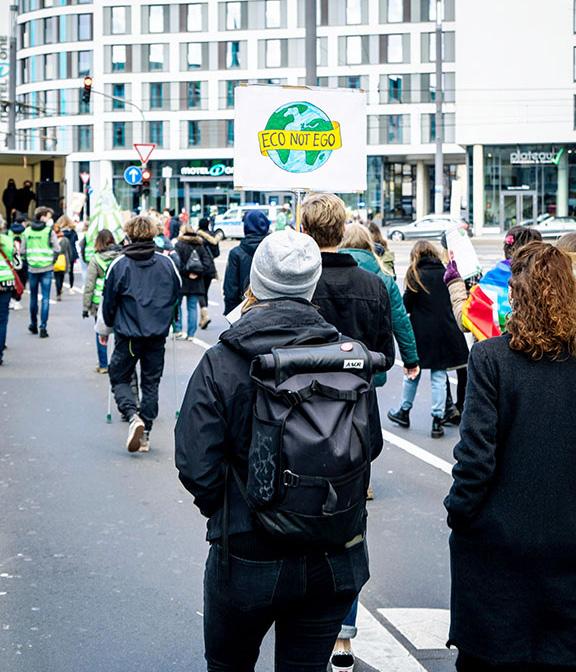
professionals are tasked with lessening the anomaly of eco anxiety amongst youth, because it can lead to “pose or amplify risk factors for mental health disorders.
Climate for Health reports professionals are dedicated to developing, “climate-focused interventions for individuals and communities alike who are faced with impacts of climate change.”
Experts encourage not only social workers getting on board, but also including social
By Mekhi Abbott AFRO Intern mabbott@afro.com
With rising temperatures and a heat wave hitting the D.C.-Maryland area youth athletes in the area are feeling the effects of the rising temperatures.
On June 8, Mayor Muriel Bowser announced an extended heat emergency amidst a heat wave that has
been plaguing the D.C.Maryland area for the past few weeks. With temperatures over 90 degrees on most days of the past three weeks and heat indexes over 100 degrees, both Mayor Bowser and Gov. Wes Moore have advised D.C. and Maryland residents to plan for the historic heat wave appropriately.
“The health and safety of Marylanders is our top
priority. By declaring a State of Preparedness, I am directing the Department of Emergency Management to coordinate the comprehensive preparation of State government ahead of potential impacts because of the extreme heat and humidity,” said Moore in a press release.
According to a study released by Associate Athletics Director David Klossner at the University
of Maryland, the director of National Center for Catastrophic Sport Injury Research at the University of North Carolina at Chapel Hill Kristen L. Kucera, Ph.D. and others, over 50 high school football players have passed away due to heat stroke in the past 25 years. Women’s cross country is actually the sport whose athletes have the highest risk of being affected by heat stroke.
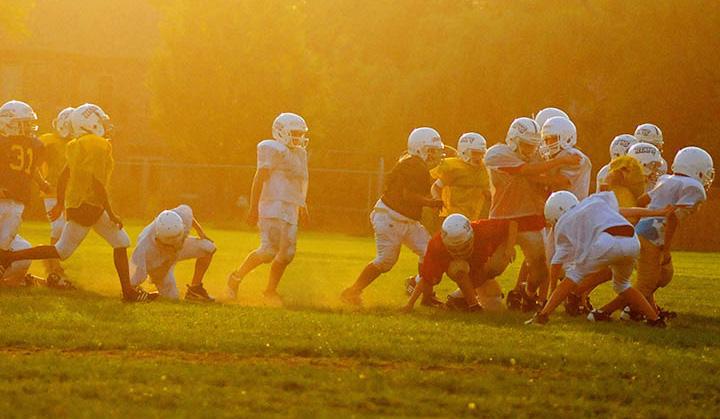
services and other local mental health practitioners to build a sense of community when easing youth away from eco anxiety, as a way to not only address environmental change, but the risk factors in mental health that are associated with it.
“Schools are a starting place,” Eaton says, urging that climate injustice be talked about in schools as a way to give Black youth a sense of control over their emotions and mental health around society.
Although the study shows that deaths in the sport of football are “rare but tragic events,” extreme heat and added weight from the equipment such as helmets and shoulder pads can heavily impact the safety of young
to stop pushing these young athletes,” attorney Benjamin Crump, who is representing Laster against the Rankin county school district, said in a news release. “Trey’s tragic death could have been, and should have been, prevented
“Trey’s tragic death could have been, and should have been, prevented by those in charge, and shows a troubling lack of adherence to guidelines surrounding heat exhaustion prevention.”
athletes, exposing them to heightened levels of bodily malfunctions. Cardiac arrest is a leading cause of death amongst young athletes.
In January 2024, Philip and Ashanta Laster filed a lawsuit against the Rankin County School system after their son Philip “Trey” Laster died from a cardiac arrhythmia after collapsing during an afternoon football practice in Aug. 2022.
“No child should ever be in danger of losing their life in pursuit of a passion, especially under the supervision and instruction of adults who should know when
by those in charge, and shows a troubling lack of adherence to guidelines surrounding heat exhaustion prevention.”
In February, cross country runner Memphis Zabawa suffered a cardiac arrest episode while running at a meet according to heart.org The seventh grader, who also suffers from asthma, was able to make a 100 percent recovery from the incident, thanks in part to people at the cross country meet who performed CPR. Athletes with asthma can be even more predisposed to cardiac related incidents when temperatures

By Margot Brown Word In Black
We must learn from our past, acknowledge our present and remain hopeful for our future in our fight to ensure equity for all.
Juneteenth, also known as Emancipation Day, became an official federal holiday in 2021, when President Joe Biden signed legislation acknowledging the importance of June 19, 1865. This date signified the true end of slavery in the United States. It’s when enslaved Black Americans in Galveston, Texas, were informed of their freedom, more than two years after the signing of the Emancipation Proclamation.
We know that our history, as Black Americans, is one of perseverance and of hope toward true equity. While we see progress, there is still work that remains to achieve true equity. For example, we know your zip code is the greatest predictor of life expectancy. That’s because people of color are more likely to live in communities with oil refineries, chemical facilities, concrete batch plants, salvage yards and freeways. We are also more likely to have riskier jobs and less access to health care and insurance. Simply put, Black Americans and communities of color face the harshest environmental consequences with little to no relief.
For more than 20 years, I’ve been a part of the environmental justice
movement that works to remedy environmental harms that have been purposefully or incidentally imposed on specific communities and to prevent similar injustices from happening in the future.
The movement has come a long way since its origins in 1982, when a predominantly Black community in Warren
“We must learn from the historic injustices of the past and advocate for a better tomorrow, today.”
County, North Carolina, protested the development of a hazardous waste landfill in their community. These protests ignited public awareness about environmental injustices and the need to work towards practical solutions.
Five years later, the United Church of Christ’s Commission for Racial Justice released a groundbreaking report titled “Toxic Wastes and Race in the United States.” The report found that race is the strongest predictor of the placement of hazardous waste sites. Since then, we have seen a defined shift in
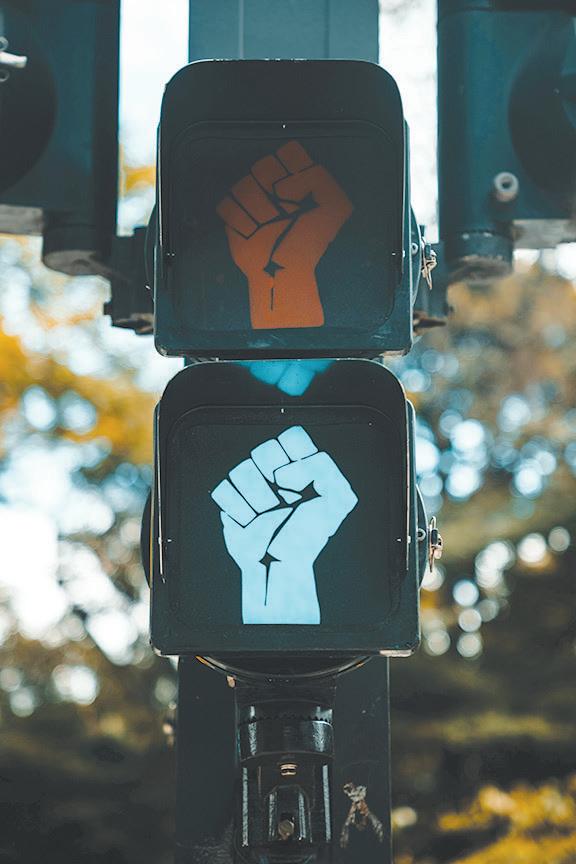
Margot Brown, senior vice president of justice and equity at Environmental Defense Fund, says the history of Black Americans is one of perseverance and of hope. But Black folks and communities of color continue to face the harshest environmental consequences.
how environmental inequities are addressed.
Today, the environmental justice movement has transcended from its grassroots origins to be an essential aspect of environmental progress. For example, environmental justice has become an integral part of academic curricula. Universities and colleges are not only weaving environmental justice into the fabric of environmental work — but they’re also making environmental justice a focal point of learning. The University of North Carolina at Chapel Hill, for example, has an environmental justice minor that students can
study. Of equal importance, environmental justice is now integrated throughout the federal government.
Over the past four years, we have reached new heights with federal funding to advance environmental justice. The Inflation Reduction Act, Bipartisan Infrastructure Law and Justice40 are historic opportunities to redress injustices and build a better future, but only if resources get to the communities that need them most. The Environmental Protection Agency established the Office of Environmental Justice and External Civil Rights (OEJECR), a national program office.
OEJECR provides needed resources and other technical assistance on civil rights and environmental justice. The office also engages with community-based organizations to support community-led action and justice efforts.
At the local level, community-based organizations are deploying their own networks of air pollution monitors, fighting permits and building solar farms to ensure a cleaner, safer and healthier future.
In 2022, with the support of the Environmental Defense Fund (EDF), I started the Frontline Resource Institute (FRI) to support frontline communities working to advance environmental justice and to provide the resources and technical assistance they need. We help these organizations
secure grants and provide them with the necessary funding and tools to assist their fight for safe, healthy and sustainable environments. Our work is guided by our conceptual committee made up of environmental justice community leaders, advocates and experts. I often say, the people closest to the problem are the closest to the solutions, and we model that at FRI.
Community leadership is crucial to having equitable solutions and resources to reach those that are the most vulnerable. We must radically listen to those who face reduced life expectancy and worsening health outcomes which are directly attributed to their physical environment. We must learn from the historic injustices of the past and advocate for a better tomorrow, today. This requires all of us to get involved in our communities, have conversations with friends and family and most importantly — vote. Your vote is your voice. At EDF, we encourage all in our network to demand change from our leaders in many ways. From signing petitions, to simply joining our mailing list to learn more, any effort counts. We must remember our responsibility to protect the progress made by electing leaders who will act with urgency on environmental justice issues and advocate for a sustainable, healthier future for all.
This article was originally published on Word In Black.
By Mylika Scatliffe AFRO Women’s Health Writer
On May 28, the South Baltimore Community Land Trust (SBCLT), represented by the Chesapeake Bay Foundation (CBF) and Environmental Integrity Project (EIP), filed a complaint on behalf of the residents in the southern Baltimore City where the Baltimore Refuse Energy Systems Company (BRESCO) is located.
The complaint states the Baltimore City Department of Public Works’ ten-year solid waste management plan has not adequately prepared to decrease reliance on BRESCO for waste disposal. The health of residents in the neighborhoods in close proximity to BRESCO including Mt. Winans, Westport, Cherry Hill, Lakeland, Brooklyn and Curtis Bay have suffered disproportionately.
What is an incinerator?
An incinerator is a type of furnace designed for burning hazardous materials in a combustion chamber. Incineration is the process of burning hazardous materials at temperatures high enough to destroy contaminants.
A 2019 report from the Tishman Environment and
Design Center at the New School in New York City revealed that 79 percent of the 73 incinerators remaining in the United States are in low-income communities and/or communities of color.
Across the country, 4.4 million people live within three miles of an incinerator.
“You literally have these cities that have a fence to separate these operations from a nearby residential neighborhood. We use the term ‘fence line’ to define a community in close proximity to a particular hazard,” said Dr. Sacoby Wilson, professor with the Department of Global, Environmental and Occupational Health and Department of Epidemiology and Biostatistics in the University of Maryland, College Park School of Public Health.
In addition to BRESCO the largest medical waste incinerator in the country is also in southern Baltimore City. That makes two types of waste streams in that community.
“You have the kind of household, municipal waste burned at BRESCO, and waste from our local hospitals and academic institutions from around the nation being shipped into that community,” said Wilson.
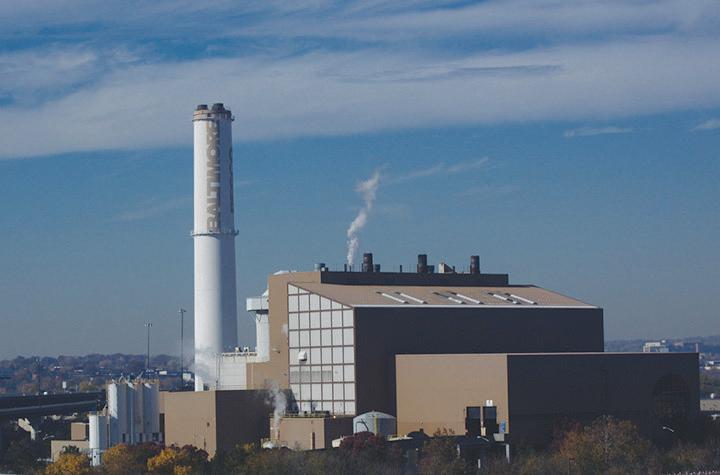
Medical waste includes syringes, sterilizers, clothing worn by medical professionals (i.e., gloves and disposable gowns) and biological byproducts – all of which is burned at the medical waste incinerator.
“Combusting those materials results in one major byproduct –particulate matter. Particulate matter means dust in the air,” explained Wilson.
Particulate matter is basically respirable dust which immediately brings to mind air pollution and respiratory disease, but there are myriad other health repercussions.
“This exposure means particulate gets into the lungs and bloodstreams of the nearby residents,
targeting various organs and creating a domino effect of asthma attacks, elevated blood pressure, strokes, more emergency room visits and hospitalizations.”
The health implications are far reaching for residents in a fence line community. The pollution from incinerators can contribute to kidney disease, diabetes, Alzheimer’s disease, fetal development and reproduction. This leads to poor maternal health outcomes like low birth weight, prematurity and birth defects.
Wilson explained how the emission from incinerators is one part of a very dangerous loop for public health.
“This is a major reason you see such
high rates of asthma in communities of color; they disproportionately host sources of air pollution whether there are stationary sources like incinerators, or mobile sources,” Wilson said.
Mobile sources include, for example, the heavy truck traffic generated by
“Combusting those materials results in one major byproduct –particulate matter. Particulate matter means dust in the air.”
transporting trash from within the city to the incinerator, and ash from the incinerator to the city-owned Quarantine Road Landfill.
According to the EPA, environmental justice is the “fair treatment and meaningful involvement of all people regardless of race, color, national origin, or income, with respect to development, implementation and enforcement of
environmental laws, regulations and policies.”
Environmental justice represents equity in how environmental risks are visited upon marginalized populations. In the case of incinerators, impoverished communities and communities of color are falling short of having equitable access to quality environmental goods. The part of Baltimore that hosts those incinerators is among the highest percentile in the state when it comes to environmental hazards.
“You’re basically seeing the worst rankings when it comes to environmental justice,” said Wilson. In recognition that no single method waste management is appropriate for all materials and waste streams, the EPA has developed the nonhazardous materials and waste management hierarchy. The hierarchy places emphasis on methods such as reducing, reusing, recycling and composting as the most desirable and waste treatment and disposal as the least desirable for the environment.
Actions such as the complaint filed against Baltimore city, seek to gain a measure of environmental justice for the residents in south Baltimore.

By Frank Dexter Brown Special to the AFRO
Local, national and global efforts embrace climate adaptation and mitigation policies to make societies more resilient and economically viable in a rapidly changing world.
The dangers of severe weather events have hit home in recent months: In mid- to late-June, massive floods from historic, record torrential downpours overflowed riverbanks throughout the Midwest from South Dakota and the Big Sioux River, to Iowa to the striking images of Minnesota’s Blue Earth River pouring over the sides of the century-old Rapidan Dam. The downpours were soon followed by a heat dome that spread across much of the United States resulting in heat events of more than 100 degrees from California to Florida, Texas to Illinois, Oregon to Maine. And then in early July, at the start of hurricane season, came hurricane/tropical storm Beryl with winds rarely experienced so early in the summer. The city of Houston was completely underwater in sections as roads were transferred to rivers and streams and the city looked as if it had been swallowed by nearby Gulf of Mexico waters. Millions were left for days without electricity, in particular air conditioning, during extreme heat days of more than 100 degrees Fahrenheit. These weather conditions all are evidence of the unfolding climate crisis.

The aftermath of hurricane Beryl leaves parts of Texas flooded and without power. Recent natural disasters are making more clear the need for change at every level of government policy.


Of course, the U.S. was not the only country afflicted. Similar weather conditions were experienced globally. Consider that Beryl, before winding down to the tropical storm that flooded Houston, was a Category 4 hurricane that decimated parts of the Caribbean — Jamaica, especially the parish of St. Elizabeth, was damaged extensively; Curacao, St. Vincent and the Grenadines, saw almost complete infrastructure devastation and Barbados saw the decimation of its fishing industry with the loss of more than 20 fishing boats. In the Amazon, mostly Brazil, but also affecting Peru, Bolivia and Colombia, wildfires that continued from March to May blazed a deadly trail. Then consider the more than 1,300 people who died while making the pilgrimage to the Holy City of Mecca in Saudi Arabia. And on the African continent, there was turmoil throughout 2024, especially East African nations Ethiopia, Somalia, Kenya, Tanzania and Burundi, where hundreds of lives were lost and at least 1.6 million people affected by flooding from seasonal monsoons and cyclones —as a result, now in July, more than 48 million people are estimated to be facing food insecurity due to the devastation from these spring storms.
Meanwhile, scientists and others are warning: yes things are bad and becoming more troubling, but without immediate and aggressive human intervention worldwide, the worst is yet to come.
It’s noteworthy that it has long been understood that local, regional and national governments all have a powerful role to play in the global climate response. Increasingly, this includes putting local and regional adaptation policies into action to foster climate resilience — policies that support reducing greenhouse gas emissions, that alter land-use regulations and decision-making, emphasize smart growth, natural resource conservation and green infrastructure. These policies foster safer, more equitable economic decisionmaking among the world’s wealthiest nations, and offer protections against extreme weather events for the world’s most vulnerable communities and peoples. This was a focal point of the 196 nations that adopted the Paris Agreement in 2015 at the United Nations Framework Conference on Climate Change (UNFCCC—COP 21) in Paris, France.
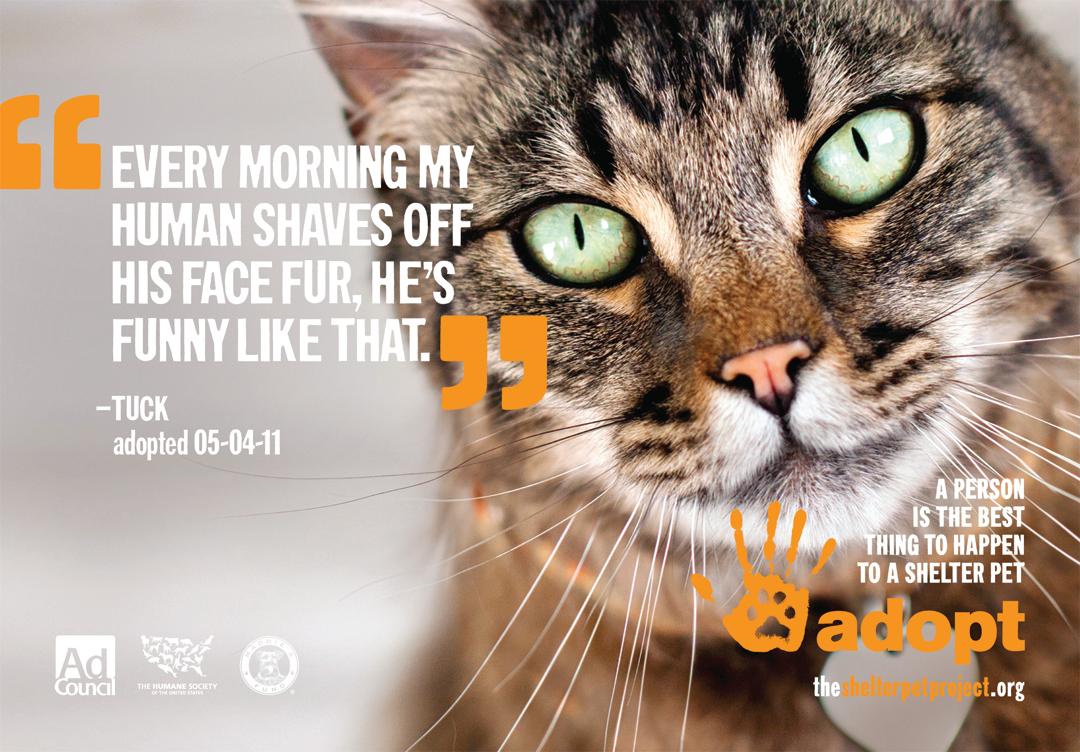



By Mathew Barlow, UMass Lowell and Jeffrey Basara, UMass Lowell
The heat wave that left more than 100 million people sweating across the eastern U.S. in June 2024 hit so fast and was so extreme that forecasters warned a flash drought could follow across wide parts of the region.
Prolonged high temperatures can quickly dry soils, triggering a rapid onset drought that can affect agriculture, water resources and energy supplies. Many regions under the June heat dome quickly developed abnormally dry conditions.
The human impacts of the heat wave have also been widespread. In Ohio and Pennsylvania, emergency room visits for heat-related illnesses surged. Several Massachusetts schools without air conditioning closed to protect kids and teachers. In New York and New Jersey, electric wires sagged in the heat, shutting down trains into and out of New York City and leaving commuters stranded.
We study weather patterns involving heat. The June 2024 heat wave was unusually early and long-lasting compared with typical patterns for the Northeast U.S.
It was caused by a large high-pressure system called a heat dome that extended from the ground more than 10 miles up through the atmosphere. A heat dome is both a cause and an effect of extreme heat. Very large and strong heat domes, like the Northeast event –which reached higher into the atmosphere than any previous June event – have a greater potential for higher temperatures impacting more people.
It was also part of a global outbreak of early season heat that put lives at risk in many countries around the world.
Heat is becoming a global problem
Record heat has hit several countries across the Americas, Europe and Asia in 2024. In Mexico and Central America, weeks of persistent heat, with temperatures as high as 125 degrees Fahrenheit (51.8 Celsius), combined with prolonged drought have led to severe water shortages and dozens of deaths.
Extreme heat turned into tragedy in Saudi Arabia as over 1,000 people on the Hajj, a Muslim pilgrimage to Mecca, collapsed and died. Temperatures reached 125 F (51.8 C) at the Grand Mosque in Mecca on June 17.
In Greece, where temperatures were over 100 F (38 C) for several straight days in June, at least several tourists died or were feared dead after going hiking in dangerous heat and humidity.
India also faced temperatures around 120 F (49 C) for days in April and May that affected millions of people, many of them without air conditioning.

A general view of a crowded beach at Varkiza suburb, south of Athens, Greece, on Sunday, July 14, 2024. Greek authorities have warned of an impending weeklong heat wave during the summer tourist season, with a high risk of dangerous wildfire. The new heat wave comes on the heels of the hottest June on record in Greece.
Although heat waves are a natural part of the climate, the severity and extent of the heat waves so far this year are not “just summer.”
A scientific assessment of the U.S. heat wave estimates that heat this severe and long-lasting was two to four times more likely to occur today because of human-caused climate change than it would have been without it. This conclusion is consistent with the rapid increase over the past several decades in the number of U.S. heat waves and their occurrence outside the peak of summer.
These record heat waves are happening in a climate that’s globally about 2.2 F (1.2 C) warmer than it was before the industrial revolution, when humans began releasing large amounts of greenhouse gas emissions that warm the climate.
While a temperature difference of a degree or two when you walk into a different room might not even be noticeable, even fractions of a degree make a large difference in the global climate.
At the peak of the last ice age, some 20,000 years ago, when
the Northeast U.S. was under thousands of feet of ice, the globally averaged temperature was only 10.8 F (6 C) cooler than now. So, it is not surprising that 2.2 F (1.2 C) of warming so far is already rapidly changing the climate.
Countries promised in 2015 as part of the Paris Agreement to keep warming well under 2 C, but current government policies around the world won’t meet those goals. Temperatures are on pace to continue rising, with the increase likely to more than double again by the end of the century.
If you thought this was hot
While this summer is likely to be one of the hottest on record, it is important to realize that it may also be one of the coldest summers of the future.
For populations that are especially vulnerable to heat, including young children, older adults and outdoor workers, the risks are even higher. People in lower-income neighborhoods where air conditioning may be unaffordable and renters who often don’t have the same protections for cooling as heating will face increasingly dangerous conditions.
Extreme heat can also affect economies. It can buckle railroad tracks and cause wires to sag, leading to transit delays and disruptions. It can also overload electric systems with high demand and lead to blackouts just when people have the greatest need for cooling.
The good news: There are solutions
Yes, the future in a warming world is daunting. However, countries have made significant progress. In the U.S., the 2022 Inflation Reduction Act has the potential to reduce U.S. greenhouse gas emissions by nearly half by 2035.
Switching air conditioners to heat pumps and network geothermal systems can not only reduce fossil fuel emissions but also provide cooling at a lower cost. The cost of renewable energy continues to plummet, and many countries are increasing policy support and incentives.
There is much that humanity can do to limit future warming if countries, companies and people everywhere act with urgency. Rapidly reducing fossil fuel emissions can help avoid a warmer future with even worse heat waves and droughts, while also providing other benefits, including improving public health, creating jobs and reducing risks to ecosystems.
This article was originally published by The Conversation.
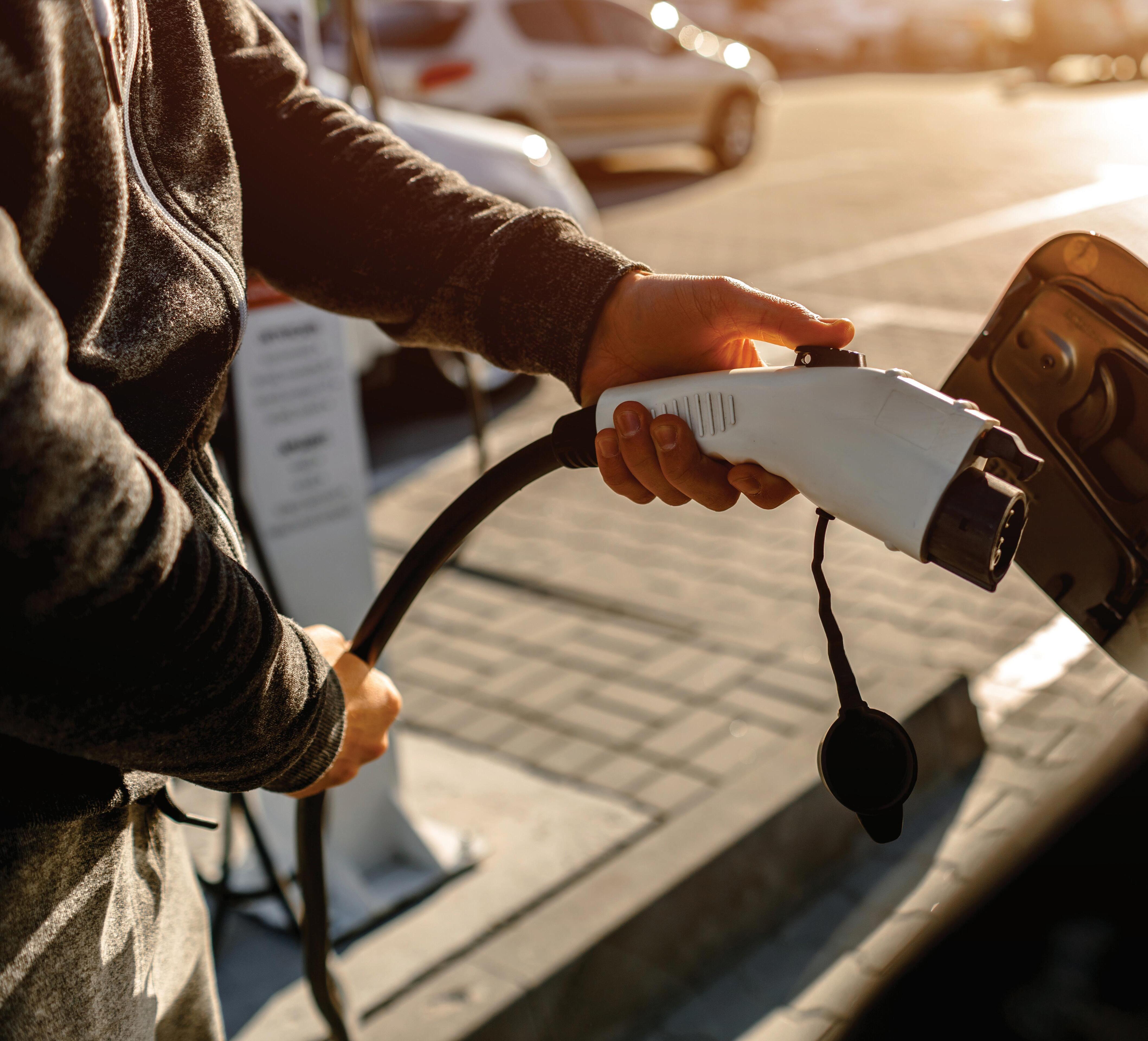

By Lizzie Suber lizziesuber@afro.com and Saniyah Larkins slarkins@afro.com AFRO Interns
In the midst of the summer and with heat waves persistent throughout the country, thinking about climate change is practically unavoidable. This week, AFRO interns Lizzie Suber and Saniyah Larkins invited Black people to share their reflections on how they believe climate change has impacted their own lives and what they believe the average person can do to combat climate change.

“Climate change affects me indirectly through the concern I have for my family. As someone whose family lives in Florida, hurricanes are already a safety concern. However, as the climate crisis has persisted, we have seen weather patterns becoming more extreme, leading to deadly storms that can have lasting consequences. This creates a sense of worry for my family who cannot simply uproot themselves from their homes.
I try my best to limit my energy consumption in order to contribute to lowering greenhouse gas emissions. Things like not leaving my car running excessively and using public transportation when I can are all ways that I try to contribute.”
Ronni Butts, 19 Charlotte, N.C. Student, North Carolina Central University


“Being a young adult, I now think of the impact climate change may have on my children’s future if I pursue that route. I feel as though it is unfair that the destruction of the environment incurred by prior generations must now be cleaned up by us, and unfortunately by later generations as well. What I can do to help the situation is use less power and fossil fuels. This can be as small as using Baltimore public transportation and other community share resources.”
Julius Coker, 20
Charlotte, N.C.
Student, Johns Hopkins University

“The unusual weather patterns in the part of California I go to school in has been one of the ways I’ve experienced climate change. Palo Alto used to be a city that received snow in the winter, but it no longer snows here. Also, this is a part of California that has historically been known for its cooler temperatures but recently, the summers have become increasingly and abnormally hot. Not only that, but my family members that live on various Caribbean islands have been experiencing more destructive tropical storms and hurricanes and at unusual times of the year. For example, hurricane Beryl that struck last week is unusual because it’s not quite the peak of hurricane season yet.
Climate change can be reduced little by little on an individual scale. Reducing carbon emissions by carpooling, biking, and even using less water when showering can be a good starting point.”
Joy Molloy, 21
U.S. Virgin Islands Student, Stanford University
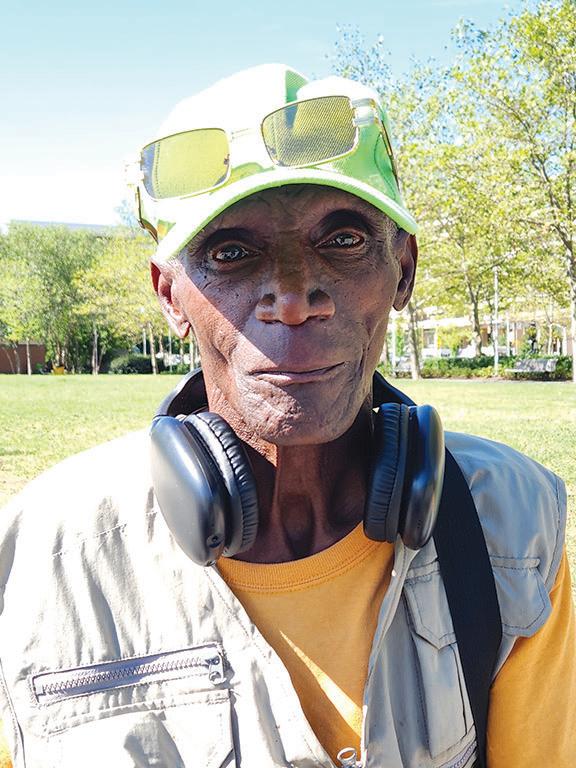
“I’m affected a pretty fair amount — I’ve seen a lot of things change in the city. People are not doing what they are supposed to do and that’s not fair to us. You just have to deal with the situation. You have some people saying they want to help, and then you have some people that say they can help but they don’t.”
William Jackson, 75
Baltimore native Retired
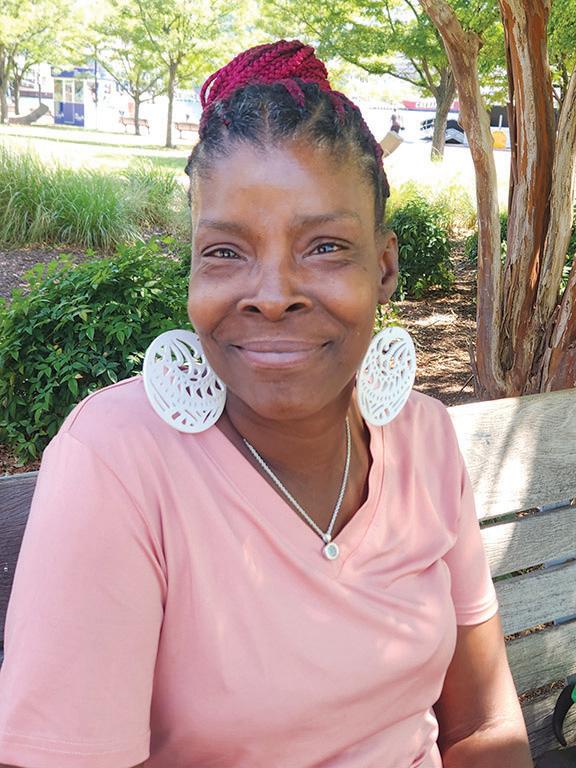
“Climate change affects me a lot. There is a lot [in the city] that you want to do but you can’t because of the heat and the humidity. People always say recycling plays a part in the environment and that one person can start it, but one person can’t finish it by themselves. If we all do our part, it would help to fix the pollution in the city. I try my best to clean up the trash around my area.”
Patricia Wilder, 55 Philadelphia Home care

By Tierra Stone AFRO Intern tierrastone@afro.com
For many years, in one corner of southwest Baltimore, Stillmeadow Community Fellowship has been taking progressive steps to help their neighborhood adapt to climate change. They have worked towards building a ten-acre forest, installed an urban apiary, and are one of the city’s resilience hubs.
Turning neighborhood churches into resiliency hubs is one of the many initiatives the Baltimore Office of Sustainability has created to help palliate the effects of climate change within the city. The office, founded in 2007, is focused on creating an environmentally safe atmosphere to improve the quality of life by lowering the amount of
greenhouse gasses and carbon emissions.
Mayor Brandon Scott has worked closely with the Baltimore Office of Sustainability to reach the goal of making sure the city becomes carbon-neutral by 2045.
“From the start of my administration, I have made it clear that sustainability and improving the lives of all residents is a priority,” Scott wrote.
Climate change has become more recognized as a global phenomenon with studies showing that droughts, wildfires and extreme rainfalls have been the effect of greenhouse gasses caused by our daily lifestyle. This has prompted urban areas across the country to cope with the everchanging paradigm shifts in the environment.
Cities in particular are facing big issues such as rising sea
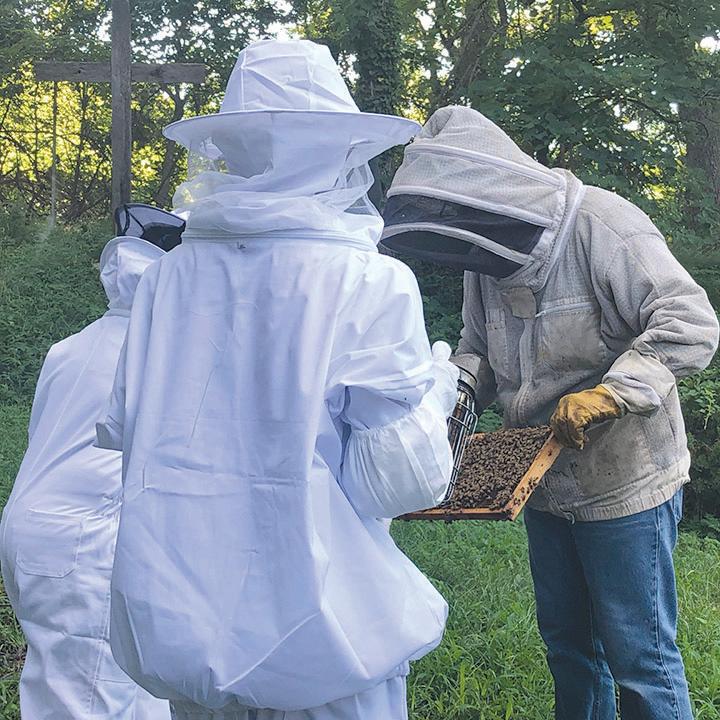
levels, drought and scorching heat temperatures. However, certain parts of Baltimore have faced flooding and damage to local infrastructures.
affects everyone and then it can be several degrees warmer in some of these neighborhoods. Some of those neighborhoods are the same places where
“We believe as a church that God gave us the earth as an amazing gift, and that any gift that he gives us he expects us to manage it well.”
The Baltimore Social Environmental Collaborative has worked extensively with the Office of Sustainability since September 2022 to codesign climate change solutions and to improve the wellbeing of residents.
Dr. Benjamin Zaitchik, professor of Earth and Planetary Sciences at Johns Hopkins University described how these emissions are created and emitted throughout the atmosphere.
“Greenhouse gasses refers to any molecule in the gas form, so anything that we put into the air ends up warming the planet. [Which] includes things like carbon dioxide that gets in when we burn coal or oil or some other sources as well as a bunch of other industrial chemicals; and when they get into the atmosphere, essentially they act like a blanket absorbing some of the heat the earth is trying to radiate toward outer space and that ends up warming the planet,” he said.
Zaitchik shared how the harmful effects of these emissions have caused neighborhoods to experience more heat than other parts of the city.
“Baltimore is experiencing that general warming and you end up with some of the neighborhoods that are experiencing heat. The heat
people maybe don’t have air conditioning, but Baltimore is already going to be hotter because it’s a city and we’ve got this vulnerability,” said Zaitchik.
According to the Lawrence Berkeley National Laboratory, many urban areas within the United States have experienced heat waves because of the heat island effect which has caused health-related concerns among civilians.
“Roofs and pavements can constitute to about 60 percent of the surface area of a U.S. city. These surfaces are typically dark in color and thus absorb at least 80 percent of sunlight, causing them to get warmer than lighter-colored surfaces. These warm roofs and pavements then emit heat and make the outside warmer.”
Zaitchik elaborated on his work with several community members and noted that the temperature was higher at night throughout the city.
“Baltimore is a pretty substantial urban heat island and over the past few weeks we’ve seen at night, which is the time the urban heat islands tends to be biggest—it was up to seven degrees warmer at some locations in East Baltimore than it was in the suburbs to some of the greener neighborhoods on the north side of town,’ said Zaitchik.
Nonetheless, the Office of
Sustainability created the climate action plan to keep track of greenhouse gas emissions and how to deal with the impacts of climate change.
Zaitchik said that although the climate action plan is still quite new he believes the planning can help get the city on the right track.
Baltimore’s Office of Sustainability reported how the urban heat island effects have had an impact on the city but also listed the components to reduce these emissions.
“Several elements are known to reduce the impact of UHI’s: permeable surfaces on roadways, sidewalks, parking lots and alleys, vegetated or green roofs, urban tree canopies, or green spaces on urban lands,” the office wrote.
At Stillmeadow, in addition to the beehive and work to revitalize the urban forest, volunteers have been working on steps like planting trees in the peace park to help reduce the heat island effect. They have also created walking paths for people to spend time in nature, and help their mental health. They have also installed rain barrels and cisterns to collect rainwater, which they use to water their
vegetables and other plants.
Yorell Tuck, director of operations at Stillmeadow Community Projects, discussed the particulars behind Stillmeadow and how a flood damaged the neighborhood in 2018, which prompted them to realize how they contributed to the flooding.
“This area is a flood zone and every decade there’s a major flood,” she said.
“Our stream in our peace park goes through a culvert and a tree had fallen [which] blocked it, and so that water had nowhere to go but up and out. Part of us recognizing that incident with the flood helped us to realize that there’s ways in which our property contributed to the flooding for years,” said Tuck. Tuck admitted they have taken preventative measures to keep floods from happening again.
“If there’s a tree or limb that falls we cut it and we get it out of the way, and then we’ve also installed rain barrels and cisterns to catch our stormwater runoff from our roof which we’ve repurposed to water our gardens,’’ she said.
See more on afro.com
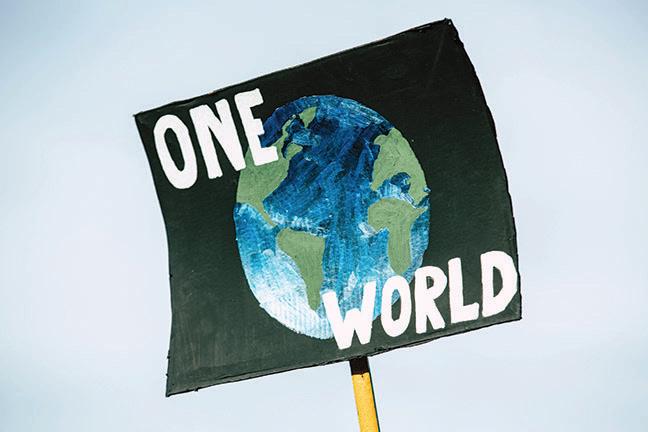
Climate Change continues to be a global phenomenon that causes intense heat temperatures, floods, and damage to local infrastructures throughout urban areas.
By Tashi McQueen AFRO Political Writer
The Biden-Harris Administration has made addressing climate change a priority, which includes Black faith leaders.
“The Federal Emergency Management Agency has been focused since the beginning of the Biden-Harris administration on helping to lead whole community climate resilience. What we recognize is that when communities are affected by disasters, unfortunately, Black communities have been disproportionately impacted,”
Marcus T. Coleman, Jr., director of the Department of Homeland Security Center for Faith-Based and Neighborhood Partnerships (DHS Partnerships Center), told the AFRO. “What we wanted to do was create a series of engagements to bring together faith leaders, community leaders, non-government organizations and begin to be proactive about what we can do to help mitigate against the impacts of climate change.”
According to the McKinsey Institute for Black Economic Mobility, the results of climate change such as damaged property and increased health issues due to dangerous heat exposure or a lack of clean air and water, can significantly hinder the potential for Black socioeconomic mobility.
Black populations are also more vulnerable to physical hazards due to their
“The
roundtable that was hosted in June was one of several iterations of conversations we’ve been having again since 2021 and reflects our focus on making sure that before we have our next major disaster, we’ve built relationships with a broad array of partners.”
concentration in areas more susceptible to extreme weather. Around half of all Black people in the U.S. reside in 11 southeastern states, which include Alabama, Louisiana, Maryland and Tennessee, where intense heat, hurricanes and flooding are particularly high.
“The roundtable that was
hosted in June was one of several iterations of conversations we’ve been having again since 2021 and reflects our focus on making sure that before we have our next major disaster, we’ve built relationships with a broad array of partners,” said Coleman.
The roundtables and related meetings have been conducted by DHS and the Federal Emergency Management Agency (FEMA), gathering groups of non-profits, federal agencies and faith-based organizations under the White House’s National Climate Resilience Framework.
Objectives under the framework include equipping U.S. communities with the resources they need to determine climate risks develop solutions and help neighborhoods become more safe, equitable and resilient.
Dr. Leslie Copeland-Tune of the National Council of Churches is one of the partners who attended an April multifaith leader climate resilience roundtable. Copeland Tune shared her experience at the meeting.
“It was really helpful to hear how FEMA and DHS negotiate responses to emergencies, and how they do the preparedness piece, and knowing the resources that are available to churches and faith-based communities for grants and other programmatic initiatives,” said Copeland-Tune.
“You have a better idea of if you were an affected community, how you might engage with them to get the best response.”
One thing Copeland-Tune
said that she believes could be improved is ensuring information on grants and resources is easily available to all churches throughout the U.S.
“Just dealing with what’s going on in their local congregation, it takes a lot of
time and energy and effort,” she said. “It’s making it as easy as possible, as simple as possible, having connection points, those are the things that make the difference in ensuring churches get the resources that they need when they need them.”
Even so, Copeland-Tune says she’s experienced great communication from Coleman and Nicole C. Wood, deputy director of the DHS Partnerships Center, when she’s needed assistance.
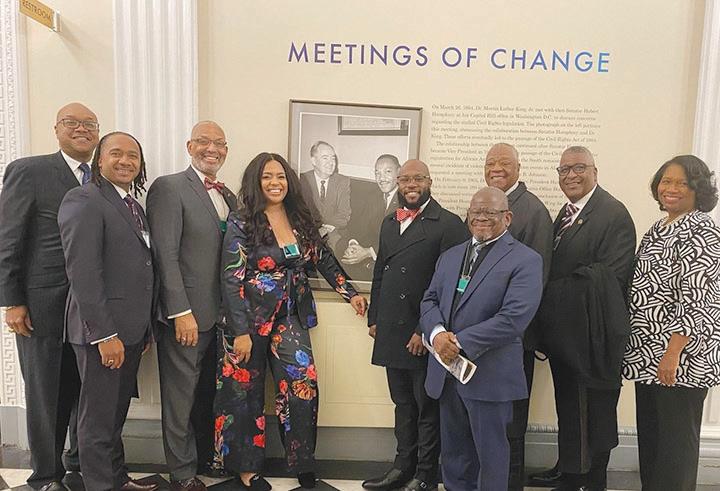

Rising temperatures attributed to climate change greatly affect elderly and those with medical conditions in the DMV. What can be done?
By Gene Lambey Special to the AFRO
Having a cold beverage, sitting in an air conditioned environment or eating a cold dessert might not be enough to beat the summer heat for some people. The elderly and individuals in the Black community suffering with medical conditions like diabetes or cancer may find it challenging to withstand the hot weather and humidity.
Over the last week and through the July 4, weekend, temperatures have reached over 97 degrees. The coming week is forecast to reach triple digits. This year’s season marks the second hottest recorded summer since 2010.
The AFRO spoke with Perina Gaines, DMV chapter president of the Black Nurses Rock organization. She offered ways to beat the summer heat.
Gaines encourages people with diabetes to “take extra precautions to manage their condition effectively.” She recommends drinking bottled water throughout the day and avoiding sugary beverages and alcohol.
“Staying hydrated is important because high temperatures can cause dehydration, which can affect blood sugar levels. Staying hydrated helps regulate body temperature and blood glucose,” said Gaines. She added that diabetics must monitor their
blood sugar levels frequently as the heat can affect blood glucose levels, also reminding them to “keep your glucose meter and other supplies in a cool place to ensure accurate readings.”
Gaines recommends for diabetics, young and old, to wear “lightweight” and “breathable” clothing to reduce overheating.
She said they should avoid peak sun hours between 10 a.m. and 4 p.m. to reduce the chance of heat illnesses, so outdoor activities should be scheduled in the morning or later in the evening.
Gaines said those with diabetes should eat small well-balanced meals of lean protein, whole grains, fruits and vegetables. She said this would “help maintain stable blood sugar levels.” She does not recommend large meals as the body tends to overheat post meal. She recommends exercising and staying active in a cool environment or swimming as well.
For the elderly, especially those with diabetes, Gaines acknowledged that these groups of people need the utmost care.
“Elderly patients with diabetes are particularly vulnerable to hot temperatures,” said Gaines.
Gaines acknowledges how crucial it is for the elderly stay cool and hydrated to prevent heat illnesses and exhaustion.
“You want to take action,” she said. The elderly have a ‘reduced stability’ in regulating body temperature due to their aging as well as sweat production and circulation.” Diabetes further

reduces these natural functions, increasing the odds of heatrelated illnesses.
Gaines said the elderly tend to have a “diminished sense of thirst,” meaning they tend to not drink enough water, which could lead to dehydration.
“Dehydration can exacerbate existing health conditions, including diabetes and lead to kidney damage, urinary tract infections and other complications.”
She encourages caregivers and family members of the elderly diabetic person to encourage drinking water or eating hydrating fruits regularly
and to maintain cardiovascular health.
“This is important because both diabetes and aging are risk factors for cardiovascular disease. The added strain of hot temperatures can increase the risk of heat-related issues. Staying cool reduces the cardiovascular effect on the body.”
Keeping medication stored securely, cooled and accessible is important as well, especially insulin. Gaines insists that caregivers and family members should be attentive to their loved ones member or patients throughout the summer.
The AFRO asked Gaines about the effectiveness of cooling centers around D.C. She said a percentage of the elderly who are homeless and those that do have homes have access to these centers if they do not have an AC unit or fans.
In her final comment, Gaines recommends elderly and diabetic patients to speak with their primary care doctors and endocrinologists in case of complications.
Dr. Kerri Layman, chair of Emergency Medicine, from Georgetown University Hospital talked about what the emergency department does to help patients suffering from heat-related illnesses.
“For us in the emergency department, we care for patients who didn’t necessarily realize that they would experience a heat-related illnes. We have to work with our dietary department to make sure that we have the proper amount of ice needed and then have our nurses trained so that we can rapidly cool a patient in case we need to in the emergency department.”
Dr. Layman mentioned the increasing number of heatrelated cases occurring so far this summer. She noticed this was a similar pattern to what was experienced in past summers during a stream of heat waves.
She agreed cooling centers are effective for the elderly and those most susceptible to the intense heat and humidity.”Just getting out of that hot air allows
your body to regulate,” she said. In the case of a diabetic person, Dr. Layman said sweating, due to the heat, can lead to dehydration, “making your sugar higher than it normally would be,” as mentioned previously.
Mayor Bowser released a statement on July 8, declaring an Extended Heat Emergency and setting forth a plan to confront this current heat wave. The statement urges residents to decrease their hours of being outside and to be aware of warning signs of heat illnesses.
“It is important for residents to recognize the signs and symptoms of heat exhaustion and stroke. Symptoms may include dry red skin, convulsions, throbbing headaches, disorientation, chills, delirium and coma. The onset of heat stroke can be rapid. A person can go from feeling apparently well to a seriously ill condition within minutes.” Bowser’s statement urges agencies like the Department of Human Services (DHS), the United Planning Organization (UPO), the Interagency Council on Homelessness, and the Department of Aging and Community Living (DACL) to provide “welfare checks and encourage individuals” to stay inside in a cool environment. Cooling centers such as buses are stationed around D.C. to accommodate the elderly and the vulnerable individuals to the heat. Local pools and recreation centers have extended their hours as well.




By Madeline Seck AFRO Intern mseck@afro.com
On the eve of Fourth of July holiday, July 3, the Washington Aqueduct deemed the drinking water low quality recommending D.C. and parts of Northern Virginia residents to boil water before drinking. As of 7:30 a.m. on July 4, the advisory had been lifted.
The U.S Army Corps of Engineers Washington Aqueduct, which supplies and ensures safe, reliable and costeffective drinking water for D.C. as well as small sections of Arlington and Fairfax County V.A. found that the surge of high temperatures caused elevated levels of algae blooms along the Potomac River resulting in high turbidity and leading to a boil water advisory. Turbidity is the measure of how clear water is.
John Lisle, vice president of Marketing and Communications for D.C. Water explains turbidity as “a measure of water
“All water being supplied from the Washington Aqueduct was completely within EPA standards and remained that way throughout the boil water advisory and we continue to take proactive measures to protect public health.”
cloudiness or clarity, a factor in assessing water quality.”
Customers may notice their water looks cloudy or hazy,” according to an Arlington County press release.
The advisory had guidelines such as boiling all water for one minute, storing it in a clean container, then cool completely before drinking. Washing hands and showering can be done as normal under hot water.
It was also recommended that those with a weak or newly developing immune system such as infants, young children and senior citizens be cared for with precaution as they would be at high risk.
“There are two treatment plants, Dalecarlia, on the far western side of
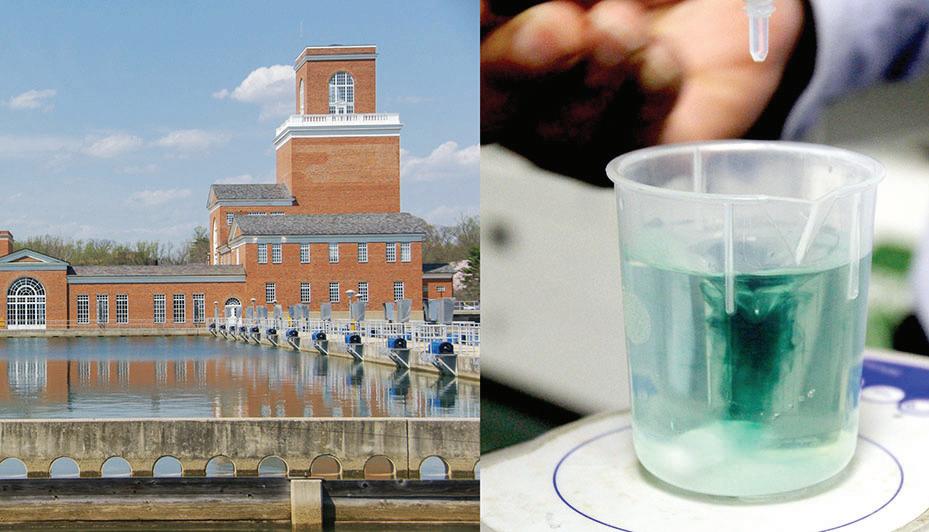
the district along the Potomac River and McMillan near Howard University. Water operations and production shifted to McMillan on July 3, because they were experiencing turbidity issues at their other plant,” Lisle explains.
The District of Columbia Water and Sewer Authority, a utility that distributes drinking water in Washington D.C and Arlington County had concerns this shift would limit the supply of water needed to provide for both districts, additionally, due to the increased demand for water from the fire departments because of the fireworks.
Public Affairs Specialist at the U.S. Army Corps of Engineers, Baltimore District, Cynthia Mitchell explains “The need is probably the highest throughout the year on that day.”
Mitchell also confirms that the advisory was only for precautionary measures, “All water being supplied from the Washington Aqueduct was completely within EPA standards and remained that way throughout the boil water advisory and we continue to take proactive measures to protect public health.”
With approval from the U.S. Environmental Protection Agency (EPA), water was to continue pumping from the Dalecarlia Water Treatment Plant with the advisory.
Washington Aqueduct closely


monitored and treated the water to combat algae the evening of July 3 to ensure the water quality was up to EPA standards.
“We are constantly evolving trying to modernize processes. Climate change and rise in temperatures are taken into consideration because it impacts us
long-term in providing quality water. We can ensure all consumers that the quality of the water being produced at Washington Aqueduct is excellent, and meets or exceeds all EPA standards and requirements,” spokesperson Mitchell says.


Aleisha Robinson AFRO Intern arobinson@afro.com
Across the country Americans from all walks of life are lamenting the hot temperatures. Nearly every industry has been impacted by the heat in some way, but no group has been hit with the scorching sun rays more than construction workers, crossing guards and others who make their living outdoors.
Now, as a result of the recent heat, President Joe Biden has announced new action to protect workers and communities from the extreme weather.
Biden’s proposed rule introduces the first federal safety standard addressing excessive heat in the workplace. If finalized, the rule would protect an estimate of 36 million U.S. workers from injuries related to heat exposure on the job. Those at high risk include farmworkers, delivery and construction workers and indoor workers in warehouses, factories and kitchens.
The president’s climate agenda aims to reduce energy costs for hardworking families, enhance America’s energy security, create goodpaying jobs and strengthen community-driven climate resilience across the country.
In a press release, the White House stated, “President Biden has taken historic actions to protect workers and communities from the impacts of extreme heat, including lowering home energy costs and helping more Americans stay safe, cool and healthy in their homes. The Administration has also
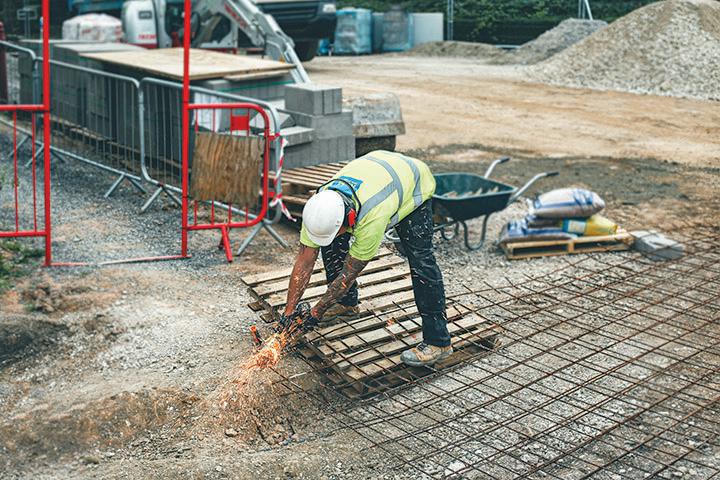
announced $1 billion in grants to expand equitable access to trees and green spaces in urban communities, which will reduce heat-island effects and cool cities. To better equip local officials and the public with robust and accessible information, the administration launched ‘heat. gov’ a centralized portal with real-time, interactive data and resources on extreme heat conditions, preparedness and response.”
According to the U.S. Department of Health and Human Services, in July, 594 counties across the United States are projected to experience five or more extremely hot days.
Across the country, Texas, Montana, Kansas and Oklahoma have been hit by the sweltering heat the hardest. Nationwide, a total of 62,859,224 people have been
affected by the unbearable conditions.
Florida and Texas, governed by Republicans Gov. Ron Santis and Gov. Greg Abbott, respectively, enacted legislation preventing local governments from mandating heat protection for outdoor workers. Should the Biden administration’s rule be finalized, it would override state standards and require states with existing heat procedures to implement the new institute measures.
Heat-related deaths have been steadily increasing in the U.S., with 1,602 deaths in 2021, 1,722 in 2022 and 2,302 in 2023.
Amid these alarming statistics, William Davis, a council representative at Eastern Atlantic States Regional Council of Carpenters has issued a stern warning, “Heat can
be an extremely dangerous thing when you’re working construction.”
“You can easily pass out on the job if you are not paying attention to what you’re doing or your body,” added Davis.
Davis emphasized the importance of awareness and precautionary measures to mitigate these risks. He expressed strong support for Biden’s recent proposal aimed at enhancing protections for outdoor workers.
“Biden’s proposal is right on target because a lot of times, people may feel exhausted and because they are scared to lose their jobs, they keep quiet,” Davis added.
President Biden plans to convene state, local, tribal and territorial leaders later this summer for “White House Summit on Extreme Heat,” a conference aimed at enhancing U.S. community resilience
and global climate leadership efforts. Additionally, the Federal Emergency Management Agency (FEMA) is announcing $1 billion in grants to assist communities in managing natural disasters and the Environmental Protection Agency released a new report detailing the impacts of climate change.
In a press call, a senior White House administration official told reporters, “The purpose of this rule is simple. It is to significantly reduce the number of work-related deaths, injuries and illnesses suffered by workers who are
“Biden’s Proposal is right on target because a lot of times, people may feel exhausted and because they are scared to lose their jobs, they keep quiet.”
exposed to excessive heat… and risks while simply doing their jobs.”
Under the Occupational Safety and Health Administration rules, employers are required to identify heat hazards, develop emergency response plans related to heat illness and provide training to employees and supervisors.
They should establish rest breaks, provide shade and water and heat acclimation or building of tolerance to higher temperatures for new workers. The proposed rule sets a new penalty structure for heatrelated violations. There is a maximum penalty of about $16,000 for hazards due to employer negligence.
Biden’s administration proposed rule is a crucial step towards ensuring the safety and well-being of outdoor workers as they continue to face the increasing threat of extreme heat waves.
Lee Sanders, president of American Federation of State, County and Municipal Employees (AFSCME) expressed that climate change has led to the hottest years on record, significantly impacting workers who face rising heatrelated illnesses and injuries. He said Biden’s administration’s proposed Occupational Safety and Health Administration (OSHA) heat standards aim to update worker protections to address current environmental challenges.
“For AFSCME members— whether they’re paving roads, collecting garbage, driving students to school, directing traffic or maintaining safety in corrections facilities— these safeguards will provide much-needed relief on the job, helping them to sustain the essential services we rely on,” said Sanders. “The new heat standards, together with the recently introduced Public Service Worker Protection Act, would keep workers safe while reflecting the realities of working in 2024. More importantly, they will save lives.”
In recent years, cities across the globe have experienced alarming recordbreaking temperatures and weather catastrophes, highlighting the alarming trend of rising global temperatures associated with climate change.
Locally in D.C., there were high temperatures at sites like the Dulles International Airport which reached 100 degrees and broke its previous highest temperature99 degrees in 1988. Also, Baltimore’s BWI Marshall reached 101 degrees, breaking their previous record of 100 degrees. These record-high temperatures are impacting not only the environment but also Black and Brown communities. Global warming is causing changes that certain areas may not have funding to help combat these issues.
CEO and Chief Scientist of Science and Perspective, Dr. Ancilleno Davis explained how global warming has been causing dangerous rises in sea levels which affects Black communities, as many Black communities live at sea level. With the threat of sea level rise due to climate change, DC may experience higher water levels along with other Black communities around the world.
“When a storm comes
you’re going to get hit with that, like Katrina and South Florida these areas that are living based on environmental resources are very climate vulnerable,” explained Davis.
Davis also emphasized joining with the community to cause change. He explained how the average person can take strides to fight against climate change by prioritizing social sustainability, which is creating and maintaining healthy lifestyles for present and future communities.
“Day to day a lot of us are just wasteful. We don’t live within our means… If you stopped making five trips to the food store every week and just planned and said, I eat this amount each week, I only need to go to the food store once a week or once every two weeks, that’s what sustainability is about.”
Access to environmentally sustainable resources though, is costly. These resources are an aid to the crisis at
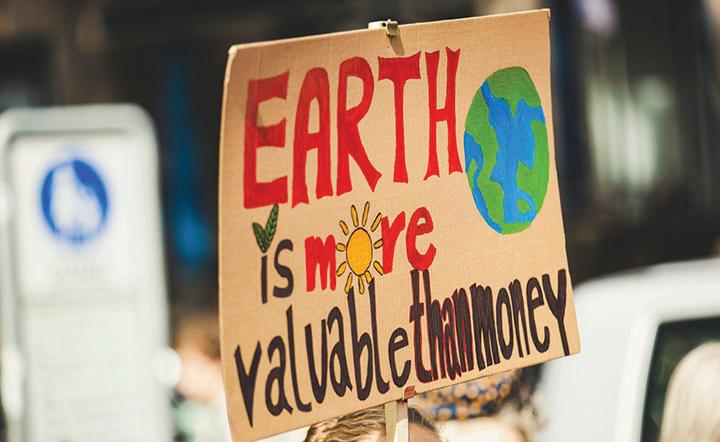
Residents of D.C. are experiencing record-breaking temperatures of 100 degrees Fahrenheit. The increase in heat is causing many environmental and social changes that are affecting Black and Brown communities.
hand but many areas are forced to continue producing environmental waste due to lack of funding or information.
Seth Laney, a policy
“I think for decision and policymakers it’s of the utmost importance for everyone to be able to make the best decisions for our countries and our communities. Everyone gets impacted by climate change in different ways.”
research assistant at the North Carolina Clean Energy Technology Center explained how some Black and Brown communities may not be able to adapt to climate change and the frequent changes like sudden heavy rain, frequent storms, droughts and dangerous heat waves.
“It [climate change] affects Black and Brown communities especially communities that are lower income because they might not be able to adjust to the changes that come with climate change” expressed Laney. “So these communities may be stuck using these unsustainable sources.”
Sources like coal and oil
are unsustainable and very harmful to the environment, which in turn creates climate change.
Climate change affects things like the weather, by creating heavy rainfall, storms, droughts and heat waves which cause an increase in severe injuries.
According to the National Library of Medicine, “A national survey found that eighty-six percent of African American doctors believe that climate change is an important issue to address with their patients…The most common health effects reported were injuries from severe storms, floods and wildfires.”
Climate change not only affects the human body but the way we get food as well.
Epa.gov explained how the climate and agriculture directly correlate, and how the sudden changes of weather patterns impact the land food is grown on and the way crops grow.
“Agriculture is very sensitive to weather and climate. It also relies heavily on land, water and other natural resources that climate affects. While climate changes (such as in temperature, precipitation and frost timing) could lengthen the growing season or allow different crops to be grown in some regions.” News.climate.columbia. edu also explained how climate change is linked to food insecurity because it causes dryer land which can be unprofitable for farmers and their crops.
“In other cases, climate change could make it impossible for farmers to raise their traditional crops; ideal growing conditions may shift to higher latitudes, where the terrain or soil may not be as fertile, resulting in less land available for productive agriculture.”
Being well educated on climate change and what actions can be put forth to cause the reform of global warming is crucial in this day and age. To learn more about policies for renewable energy sources in specific states visit https://www.dsireusa.org/.

By Aria Brent AFRO Staff Writer abrent@afro.com
Earlier this year it was reported by theroundup.org that about 80 to 100 billion new garments are produced each year. The items are sold by fast fashion companies, however the garments are made by employees who are disadvantaged, overworked and underpaid. This mass production of items is alleged to happen in unsafe and inhumane working conditions in factories across Asian countries like China and Bangladesh.
The items are sold for ridiculously low prices, worn less than an average of 10 times and then discarded. This cycle of heavy turnaround has resulted in 92 million tons of textile waste each year– much of which is sent to places like Chile to be disposed of. And although this issue seems far removed from consumers in developed countries like the U.S., they’re also at risk due to toxic chemicals in the garments.
“Fast fashion is an extractive industry and it embodies that capitalistic model exploiting cheap natural resources, cheap labor and not facing any consequences or having any plan for externalities that are released into the environment,” said Ayana Albertini-Fleurant, the founder and executive director of Sustain The Culture. “They’re using children and young women in developing nations to produce their clothes. They make a fraction of what they would make in a developed country and oftentimes it violates human rights.”
Sustain The Culture is a non-profit organization based in Miami that focuses on working with Black youth to create a culture surrounding environmentalism and breaking down the stigma surrounding sustainability in the Black community.
Albertini-Fleurant explained how the fast-paced industry is based on trends. Items are desired one day and discarded
the next, making for an excessive amount of pollution and waste. She explained that fast fashion feeds on consumerism and is a system built to thrive in the age of social media.
“Fast fashion operates off of trends. Just as fast and unethically as it is produced, it is consumed. Fast fashion operates off of micro seasons and there can be dozens of different seasons within one year,” she said. “There’s constantly a new collection and a new trend that fast fashion is capitalizing off of. And we consume these trends. Just as quickly as we wanted to buy yesterday’s trend, tomorrow it’s in the garbage.”
The internet is full of social media influencers promoting the cheap prices, cute clothes and a wide range of options offered by fast fashion brands like Fashion Nova, TEMU and Shein. However the effects it has on global warming, the generation of waste and the production of microplastics is a conversation that needs more attention.
Most of the clothes sold on these sites are made of polyester, a synthetic fiber that doesn’t decompose. With no way of naturally breaking
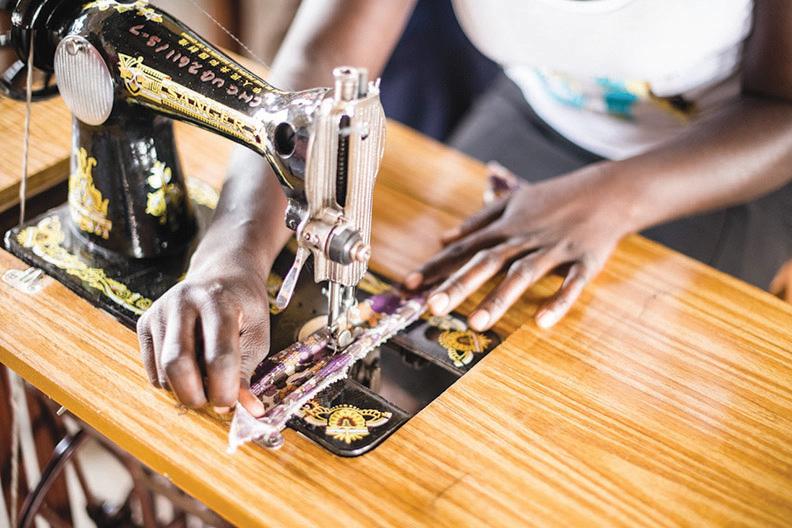
due to the clothes being burned.
“People who have nothing to do with this industry and who are not taking these profits are the ones that have to deal with the waste. Go to Ghana– you’ll find mountains of clothing that are being burned and people are breathing that in,” Albertini-
“People who have nothing to do with this industry and who are not taking these profits are the ones that have to deal with the waste. Go to Ghana– you’ll find mountains of clothing that are being burned and people are breathing that in.”
down, most clothes that are thrown away by consumers and companies end up in landfills in foreign countries or in the ocean along the coast of countries like Ghana. This issue has a ripple effect that leaves the communities in that area exposed to pollution and toxins
Fleurant explained.“A lot of these things end up in landfills in other countries. There are beaches littered with textile waste especially in Ghana, because it is coastal.”
It was noted that getting rid of clothes in a sustainable way can be a bit complex depending on how you choose
to do it. Lots of people donate their old or unwanted clothes to thrift stores, however if the clothes don’t sell, after a certain amount of time, they too, could end up in landfills. The young sustainability advocate suggests looking at places with transparent donation processes so you know what’s happening to the goods you’re giving away.
The issues that fast fashion is causing are much bigger than any singular person, however there are ways to be more intentional and sustainable when participating in fashion. Lisa Goldsand owner and founder of Circular Thrift LLC suggests buying clothes that are designed with end of life in mind.
“It really helps if a brand designs something that is intended for and marketed for longevity, durability and is eligible for easy repair. Brands can think about how to encourage their consumers to hold on to what they sell them for much longer than one season,” Goldsand explained. “The other thing that brands can do is find ways to maintain relationships with their customers that welcome them to resale, remanufacture and
recirculate what they’ve sold to their customer once they’re finished with the product.”
Circular Thrift is an online shop that pilots localized ways to advance sustainable consumption. Goldsand started the small business after 30 years in fashion manufacturing and retail where she held a plethora of roles, her most notable being the vice president of Abercrombie and Fitch.
The fashion veteran also discussed what consumers can do to be more sustainable in their fashion choices. She shared that donating and repairing your clothes are great ways to give your garments more life.
“Consumers can support brands focusing on longevity, on classic product design and who appear to be trying hard to be transparent about their challenges and successes in moving to be more sustainable. However, the biggest thing a consumer can do to sustainably participate in fashion and consumerism overall is to buy less stuff and care for what you have,” said Goldsand. “If a consumer isn’t using something that they own, they should pass it along to a friend or find
someone who might love it rather than keeping it in the closet.”
Goldsands advice about supporting brands with more ethical practices is great but it isn’t feasible for everyone.
Brands that outsource and make their products within the United States can be very expensive.
Albertini-Fleurant shared some additional tips on how to sustainably participate in fashion along with some history on how Black communities have always managed to stay fashionable even on a limited income.
“Prior to fast fashion individuals had certain skills that were more useful when making clothing than now. It was a well known skill but life is different and the culture has shifted,” she said. “My great-grandmother wasn’t wealthy but she could sew and she applied that skill to make sure the need for new or repaired clothes was always fulfilled.”
The Black community’s history of being underserved and disadvantaged has put them in the position to be the fast fashion industry’s target audience. The reasonable prices and accessibility appeal to those who are looking to ball on a budget. Albertini-Fleurant noted that she empathizes with those who feel like fast fashion has to be their main source of clothing due to limited funds or sizing options.
“If you have to buy fast fashion because of where you are with your financial situation, if it’s tough for you to find alternatives, or you are plus size and you’re not finding sustainable brands at the thrift store that are size inclusive–that’s real,” Albertini-Fleurant said. “There’s many realities that could put you in the position to buy fast fashion. I don’t want people to feel ashamed or guilty because at the end of the day, it’s such a big issue with so many layers. It’s more than one person’s responsibility to fix this issue. But if you have to buy fast fashion you can be sustainable by being more mindful of your purchases.”
By Willy Blackmore Word In Black
It’s going to be another sweltering day in New York City, where the summer’s second heat wave continues to drag on.
It’s been so hot that the city’s infrastructure is showing just how not up to task of functioning in extreme heat it really is: the Third Avenue Bridge, a rotating bridge running between Manhattan and the Bronx that can swing out to let taller ships pass by, got stuck in the open position on Monday after the entire structure swelled in the high temperatures, making it too long to swing back close.
Thursday’s forecast says that the borough could hit 90 degrees — a dangerous high temp that, according to a new study, is nearly 10 degrees hotter due to the built environment of an urban neighborhood like the Bronx. It has long been understood that cities are hotter than areas with more greenspace and less development due to what’s called the urban heat island effect.
Essentially, the concrete, asphalt, brick and cinder block, and other energy-absorbing materials that cities are made from trap and hold heat rather than reflecting or absorbing it
and allowing it to dissipate.
Just think of how a sidewalk or parking lot surface can get so hot that it almost shimmers — such surfaces can be markedly hotter than the air temperature (the number you see on the weather forecast), and when you have a whole city radiating heat back into the air on a hot, hot day, it bumps the temperature up significantly.
Now, a new study from the non-profit Climate Central shows just how much the
heat-island effect contributes to local temps in cities across the country. According to the study, more than 5 million people live in urban areas that can be at least 10 degrees hotter due to the effects of the built environment.
The study looked at 65 cities, and found that on average the temperature was 8 degrees higher across the board due the urban heat island effect. Out of the top 10 cities with the highest bump in temperatures,
seven have significant Black populations: New York, Newark, Chicago, Philadelphia, Washington D.C., Boston and Baltimore. Miami, a city that historically has had a significant Black population, is also in the top 10.
The study notes how the history of redlining continues to be felt in terms of hotter temperatures in such neighborhoods, pointing to an analysis done by researchers at Columbia University that found
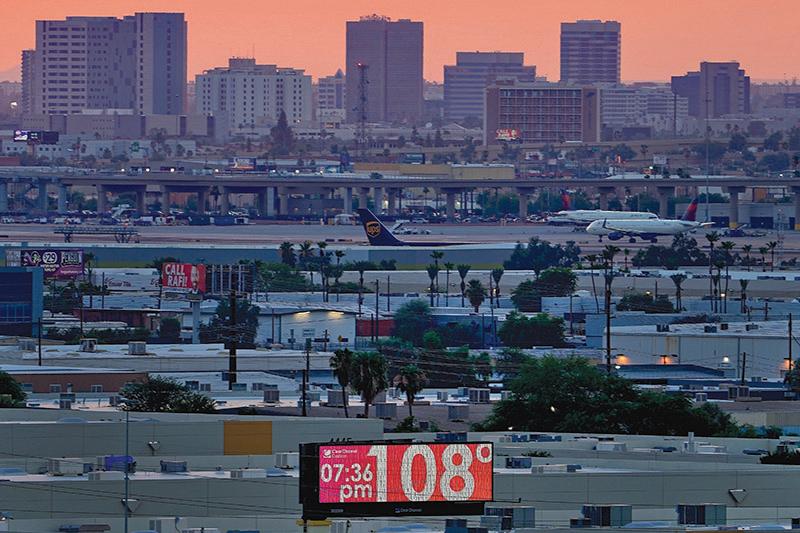
redlined neighborhoods are hotter in 150 out of 179 major cities in the country.
“What we end up seeing is this vicious cycle of how a federally codified policy from the 1930s has a long legacy effect to what we’re seeing today.”
“What we end up seeing is this vicious cycle of how a federally codified policy from the 1930s has a long legacy effect to what we’re seeing today. The communities that live around these areas are the ones who face it worst when a heatwave comes through.”
Vivek Shandas, a professor of climate adaptation at Portland State University who worked on the study, told The Guardian. But what the Climate Central research shows is that while redlining is a factor, it is
one of many, and the increase in heat presents very differently depending on which city you’re looking at. In some places, like Cincinnati, the hotter temperatures are largely confined to the urban core, while in Houston they spread across the city’s sprawl. Chicago, rather unexpectedly, is very diffuse in terms of which neighborhoods experience the highest increase, with many wealthier North Side communities more than 8.5 degrees hotter due to heatisland effect, and the Southwest Side of Chicago seeing a lower increase.
While air conditioning would appear to be the most obvious solution to beating the hotter heat in cities, cooling private homes and apartments with a/c units actually exacerbates the issue: the report notes that air conditioned buildings in a city can increase the outside heat by as much as 20 percent. Instead, more systemic and holistic changes are needed: more greenspace, more tree cover, energyefficient heat pumps instead of air conditioning, and a built environment that can reflect heat instead of trap it — which can be as simple as making rooftops white instead of black.

DIVISION ADMINISTRATION NO. 2024ADM000740
WILLIAM UPCHURCH SR. Name of Decedent Notice of Appointment, Notice to Creditors and Notice to Unknown Heirs
WILLIAM UPCHURCH JR., whose address is 1915 VALLEY TERRACE SE WASHINGTON DC 20032, was appointed Personal Representative of the estate of WILLIAM UPCHURCH SR. who died on MARCH 17, 2022 without a Will and will serve without Court supervision. All unknown heirs and heirs whose whereabouts are unknown shall enter their appearance In this proceeding. Objections to such, appointment shall be filed With the Register of Wills, D.C., Building A, 515 5th Street, N.W., 3rd Floor, Washington, D.C. 20001, on or before JANUARY 12, 2025. Claims against the decedent shall be presented to the undersigned with a copy to the Register of Wills or filed with the Register of Wills with a copy to the undersigned, on or before JANUARY 12, 2025 or be forever barred. Persons believed to be heirs or legatees of the decedent who do not receive a copy of this notice by mail within 25 days of its publication shall so inform the Register of Wills, including name, address and relationship. Date of first publication: JULY 12, 2024 Name of newspaper and/or periodical: Washington Law Reporter AFRO American Newspapers
WILLIAM UPCHURCH JR.
Personal Representative
TRUE TEST COPY REGISTER OF WILLS 7/12, 7/19, 7/26/24
SUPERIOR COURT OF THE DISTRICT OF COLUMBIA PROBATE DIVISION 2024 NRT 30
Marguerite M. Quoton Name of Deceased Settlor
NOTICE OF EXISTENCE OF REVOCABLE TRUST
Marguerite M. Quoton (name of deceased settlor) whose address was 922 S Street, N.W., Washington, DC 20001 created a revocable trust on January 26, 2024 which remained in existence on the date her death on April 15, 2024 and Mariellen T. Broolks whose address is 234 Oneida Street, N.E., Washington, DC 20011-1616 is the currently acting trustee(s), hereinaf ter the Trustee. Communications to the trust should be mailed or directed to Mariellen T. Brooks at 234 Oneida Street, N.E. Washington, DC 20011-1616.
The Trust is subject to claims of the deceased settlor’s creditors, costs of administration of the settlor’s estate, the expenses of the deceased settler’s funeral and dis posal of remains, and statutory allowances to a surviv ing spouse and children to the extent the deceased set tlor’s residuary probate estate is inadequate to satisfy those claims, costs, expenses, and allowances.
THE DISTRICT OF COLUMBIA HOUSING AUTHORITY
REQUEST FOR PROPOSAL (RFP) SOLICITATION NO.: 40-2024
Healthcare Pilot Program for On-Site Primary Healthcare for DCHA Properties
The District of Columbia Housing Authority (DCHA) invites interested
licensed organizations who will provide and implement a pilot program to include on-site primary care and nursing services to DCHA Properties.
SOLICITATION DOCUMENTS will be available beginning Monday, July 15, 2024, on DCHA’s website at www.dchousing.org under “Business” and “Solicitations”.
SEALED BID RESPONSES ARE DUE ON OR BEFORE Wednesday, July 31, 2024, at 11:00 AM. Email LaShawn Mizzell-McLeod, Contract Specialist at LMMCLEOD@ dchousing.org with copy to business@dchousing.org for additional information.









Claims of the deceased settlor’s creditors are barred as against the Trustee and the trust property unless presented to the Trustee at the address provided here in on or before. January 19, 2025 (6 months after the date of the first publication of this notice): An action to contest the validity of this trust must be commenced by the earliest of (1) April 26, 2025 (one year from date of death of the deceased settlor) or (2) January 19, 2025 (6months from the date of first publication of









Date of first publication: July 19, 2024 Name of newspaper and/or periodical: Washington Law Reporter AFRO American Newspapers



































































Reach



Please
Payment Policy for legal notice advertisements.
Effective immediately, The Afro American Newspapers will require prepayment for publication of all legal notices Payment will be accepted in the form of checks, credit card or money order. Any returned checks will be subject to a $25.00 processing fee and may result in the suspension of any future advertising at our discretion.
LEGAL NOTICES
CITY OF BALTIMORE DEPARTMENT OF TRANSPORTATION
PUBLIC NOTICE
In an effort to educate the community and receive public comment the upcoming project, a community meeting will be held.
PUBLIC MEETING FOR Old Town Mall Improvements Saturday, July 27, 2024 10:00 AM to 1:00 PM 420 Aisquith Street, Baltimore, MD 21202
If you have any questions, comments or need special. accommodations please contact: via mail
Caitlin Audette, Design Planner Department of Planning 417 E. Fayette St., 8th Floor, Baltimore, MD 21202 Or by leaving a voicemail at 410.396.8354.
Accommodation requests should be received by Wednesday, July, 24, 2024
Comments on the general scope should be received by Monday, August 12, 2024
Receive regular updates via Facebook, at Baltimore City Department of Transportation’s project website www.streetsofbaltimore.com/oldtownmall or on “X” formerly known as Twitter at @BmoreCityDOT.
Corren Johnson, DIRECTOR DEPARTMENT OF TRANSPORTATION
: ADVERTISEMENT FOR PROPOSALS TOWN OF HAMPSTEAD HAMPSTEAD, MARYLAND
HAMPSTEAD PFAS TREATMENT/CENTRALIZATION PROJECT PIPELINE CONSTRUCTION INSPECTION SERVICES
The Town of Hampstead is seeking a Firm to provide water main construction inspection services for the construction of water mains associated with the Town of Hampstead PFAS Treatment and Centralization Project (“Project”).
The Project is being funded, in part, by grants issued by the Maryland Department of the Environment State Revolving Loan Fund and the United States Environmental Protection Agency Emerging Contaminants in Small or Disadvantaged Communities Grant Program. Qualified minority business enterprises (MBE’s) and women’s business enterprises (WBE’s) are especially encouraged to participate.
To request an official copy of this Request for Proposals for Water Main Construction Inspection Services (RFP NO. TOH-WMCISFY25-01), please contact:
Judy Rang Town of Hampstead 410-239-7408 jrang@hampsteadmd.gov

LEGAL NOTICES
BOARD OF LIQUOR LICENSE COMMISSIONERS FOR BALTIMORE CITY NOTICE – JULY 2024
Petitions have been filed by the following applicants for licenses to sell alcoholic beverages at the premises set opposite their respective names. The real property for these applications will be posted on or about Written protests concerning any application will be accepted until and including the time of the hearing. Public hearings may be scheduled on or after July 25, 2024 at 10:30
AM in City Hall; 100 N. Holliday Street, Room 215, Baltimore, Maryland 21202. Please visit llb.baltimorecity.gov under the link for Hearing
Schedules for confirmation of the date, time, and place for all matters being heard by the Board.
1. CLASS “A” BEER, WINE & LIQUOR LICENSE
Applicant: Nihit, Inc. T/a Mueller’s Deli - Brijesh Patel, Hiralben Patel, and Thomas Carl Long Petition: Transfer of ownership requesting delivery of alcoholic beverages
Premises: 7205-07 Harford Road 21234
(City Council District: 3rd; State Legislative District: 45th)
2. CLASS “B” BEER, WINE & LIQUOR LICENSE
Applicant: Peter Zhang Baltimore, LLC T/a Peter Chang - Christopher Mak Chen
Petition: Transfer of ownership
Premises: 1923 Ashland Avenue 21205
(City Council District: 13th; State Legislative District: 45th)
Applicant: Merve Pizza, LLC T/a Trade Name Pending - Mehmet Guclu
Petition: New restaurant license requesting live entertainment, outdoor table service, and delivery of alcoholic beverages
Premises: 33 W. North Avenue 21201
(City Council District: 12th; State Legislative District: 40th)
Applicant: Micky’s Joint, LLC T/a Micky’s JointKrista Ann Cushman
Petition: Transfer of ownership with continuation of live entertainment and outdoor table service, requesting off-premises catering and delivery of alcoholic beverages
Premises: 5402 Harford Road 21214
(City Council District: 3rd; State Legislative District: 45th)
